SAGE 2022
SAGE 2022 Technical Program and On-Demand Access
SAGE 2022 On-Demand Content is now available in open-access format at http://hpr.oys.temporary.site/website_846cd7f6/sage_record/.
Please find below the listing of presentations and abstracts with links to individual records (SAGE Records 002–061) including Publications (Abstracts, Extended Abstracts, or Papers), Slides, Posters, and Videos.
| SAGE RECORD NUMBER | EVENT | AUTHOR(S) | TITLE | MATERIALS AVAILABLE | HYPERLINK |
|---|---|---|---|---|---|
| 001 Smith | LGS–SAGE Acadiana–SIPES Meeting, 15 Dec. 2021, Lafayette, LA, and Online | Michael P. Smith (Advanced Hydrocarbon Stratigraphy, Tulsa, OK) | Cuttings Volatiles: Produce More Oil, More Gas, and Less Water | Extended Abstract, Slides | http://sagetech.org/sage_record_001_smith/ |
| 002 Willis | SAGE 2022, 23–25 Mar. 2022, Lafayette, LA, and Online | James J. Willis (SAGE President and SAGE 2022 General Chair) | SAGE 2022 Welcome and Technical Program | Paper, Video | http://sagetech.org/sage_record_002_willis/ |
| 003 Al Amin Et Al | SAGE 2022, 23–25 Mar. 2022, Lafayette, LA, and Online | Ahmed A. Al Amin (Sirte Oil Company, Marsa El Brega, Libya), Maher A. El Amawy (Banha University, Banha, Egypt), and Ahmed M. Muftah (Department of Earth Sciences, University of Benghazi, Libya) | Late Cretaceous Deformation-Related Inlier Structure of the Jardas Al Jarari Area, Central Part of Al Jabal Al Akhdar, NE Libya | Paper | http://sagetech.org/sage_record_003_al_amin_et_al/ |
| 004 Amer Et Al | SAGE 2022, 23–25 Mar. 2022, Lafayette, LA, and Online | Aimen Amer (Schlumberger, Manama, Bahrain), Mubarak Al-Hajeri (Kuwait Oil Company, Ahmadi, Kuwait), and Ali Najem (Schlumberger, Ahmadi, Kuwait) | The Interaction between Microbial and Siliciclastic Sediments of the Lower Oligocene Deposits of the Kuwait Formation | Extended Abstract, Slides, Video | http://sagetech.org/sage_record_004_amer_et_al/ |
| 005 Amrouni Et Al Analogues | SAGE 2022, 23–25 Mar. 2022, Lafayette, LA, and Online | Khaled S. Amrouni (Department of Geology and Geophysics, Texas A&M University, College Station, TX/Department of Earth Sciences, Garyounis University, Benghazi, Libya), Michael C. Pope, Ahmed S. El-Hawat, Ahmed M. A. Al-Alwani, Mohamed SH. Abdalla El-Jahmi, Hassan S. El-Bargathi, Adel A. Obeidi, Aimen Amer, Essa A. Elbileikia, and Salah S. El-Ekhfifi | Analogues of Complex Carbonate Reservoirs from the Cyrenaican Miocene Carbonate Sequences, NE Libya | Abstract, Slides, Video | http://sagetech.org/sage_record_005_amrouni_et_al/ |
| 006 Amrouni Et Al Cyrenaica | SAGE 2022, 23–25 Mar. 2022, Lafayette, LA, and Online | Khaled S. Amrouni (Department of Geology and Geophysics, Texas A&M University, College Station, TX/Department of Earth Sciences, Garyounis University, Benghazi, Libya), Michael C. Pope, Ahmed S. El-Hawat, Salah S. El-Ekhfifi, Hassan S. El-Bargathi, Adel A. Obeidi, Aimen Amer, Essa A. Elbileikia, Hatem Barghathi, Abdelbaset Abdalla, Matthew Wehner, Mohamed SH. Abdalla El-Jahmi, Khalid A. M. Mustafa, Ahmed M. A. Al-Alwani, and Hamzah Allafi | Cyrenaica Method: Data Science Analysis and Applications in Geology to Clean and Correct Patterns of Oxygen and Carbon Stable Isotope Data | Abstract, Slides, Video | http://sagetech.org/sage_record_006_amrouni_et_al/ |
| 007 Amrouni Et Al Dissolution | SAGE 2022, 23–25 Mar. 2022, Lafayette, LA, and Online | Khaled S. Amrouni (Department of Geology and Geophysics, Texas A&M University, College Station, TX/Department of Earth Sciences, Garyounis University, Benghazi, Libya), Michael C. Pope, Ahmed S. El-Hawat, Salah S. El-Ekhfifi, Hassan S. El-Bargathi, Adel A. Obeidi, Aimen Amer, and Essa A. Elbileikia | Global and Local Geo-Chemo-Stratigraphic Events in the Cyrenaican Miocene Carbonate Platform Ar-Rajmah Group (Central Mediterranean), NE Libya | Abstract, Slides, Video | http://sagetech.org/sage_record_007_amrouni_et_al/ |
| 008 Ansari Et Al | SAGE 2022, 23–25 Mar. 2022, Lafayette, LA, and Online | Esmail Ansari, Eugene Holubnyak*, Franek Hasiuk, and Jennifer Hollenbach (Kansas Geological Survey/University of Kansas, Lawrence, KS) (Asterisk denotes speaker) | Comparing CO2 Injection Practices to Low-Salinity and High-Salinity Wastewater Injection Practices into Deep Saline Aquifers in Kansas | Abstract | http://sagetech.org/sage_record_008_ansari_et_al/ |
| 009 Auger Et Al | SAGE 2022, 23–25 Mar. 2022, Lafayette, LA, and Online | Emmanuel Auger* (Baker Hughes, Magnitude SAS, Sainte Tulle, France), Katerina Vassilellis* (Baker Hughes, Reservoir Technical Services, Houston, TX), J. Barnavol (Baker Hughes, Magnitude SAS, Sainte Tulle, France), and X. Payre (Formerly TotalEnergies, France) (Asterisk denotes speakers) | Lessons Learned from Seven Years of Microseismic Monitoring Applied to CCS | Paper, Slides, Video | http://sagetech.org/sage_record_009_auger_et_al/ |
| 010 Barrie and Michael | SAGE 2022, 23–25 Mar. 2022, Lafayette, LA, and Online | Craig D. Barrie and Eric Michael (Applied Petroleum Technology, The Woodlands, TX) | Geochemical Production Optimization—How to Get the Most out of your Rock and Fluid Samples | Abstract, Slides, Video | http://sagetech.org/sage_record_010_barrie_and_michael/ |
| 011 Bloxson Et Al | SAGE 2022, 23–25 Mar. 2022, Lafayette, LA, and Online | Julie M. Bloxson (Stephen F. Austin State University, Nacogdoches, TX), Michael C. Dix (Premier Oilfield Group, Houston, TX), Tim Prather (Premier), Austin Morrell (Premier), Giovanni Zanoni (Premier), Nicholas Nelson (Premier), Harry Rowe (Premier), and Hannah Chambers (SFASU) | Application of XRF–Based Elemental Data Characterization for CCUS Projects: Core Case Studies of the Jurassic Cotton Valley Sandstone and Cretaceous Blossom Sands, Gulf Coast Region | Abstract, Slides, Video | http://sagetech.org/sage_record_011_bloxson_et_al/ |
| 012 Bloxson Et Al | SAGE 2022, 23–25 Mar. 2022, Lafayette, LA, and Online | Julie M. Bloxson (Stephen F. Austin State University, Nacogdoches, TX), Michael C. Dix (Premier Oilfield Group, Houston, TX), Giovanni Zanoni (Premier), Tim Prather (Premier), Austin Morrell (Premier), Nicholas Nelson (Premier), Harry Rowe (Premier), and Hannah Chambers (SFASU) | Application of Principal Component Analysis on XRF Core Data from the Blossom Sand, Panola County, Texas | Abstract, Poster | http://sagetech.org/sage_record_012_bloxson_et_al/ |
| 013 Bloxson Et Al | SAGE 2022, 23–25 Mar. 2022, Lafayette, LA, and Online | Julie M. Bloxson (Stephen F. Austin State University, Nacogdoches, TX), Michael P. Solis (Ohio Department of Natural Resources, Columbus, OH), and Robert Friedfeld (SFASU) | Geochemical Characterization and Depositional History of the Silurian Salina Group in Ohio using XRF, SEM, and Subsurface Mapping | Abstract, Slides, Video | http://sagetech.org/sage_record_013_bloxson_et_al/ |
| 014 Boro and Ulloa | SAGE 2022, 23–25 Mar. 2022, Lafayette, LA, and Online | Herman Boro (SGS, Voorburg, The Netherlands) and Mario Ulloa (OPECS, Bucharest, Romania) | The Application of Drill Cuttings for Optimized Hydraulic Fracturing | Abstract, Slides | http://sagetech.org/sage_record_014_boro_and_ulloa/ |
| 015 Brennan | SAGE 2022, 23–25 Mar. 2022, Lafayette, LA, and Online | Brian Brennan (Independent Geophysicist, Lafayette, LA) | Tinker, Tailor, Soldier, … Consultant? Geophysical Tradecraft, 2022 | Abstract, Slides, Video | http://sagetech.org/sage_record_015_brennan/ |
| 016 Brightwell-Coates | SAGE 2022, 23–25 Mar. 2022, Lafayette, LA, and Online | Stephanie Brightwell-Coates (Hilcorp, Houston, TX) | Geochemical Site Survey in the Cook Inlet, Alaska | Abstract, Slides | http://sagetech.org/sage_record_016_brightwell-coates/ |
| 017 Cox | SAGE 2022, 23–25 Mar. 2022, Lafayette, LA, and Online | Katrina Cox (Core Laboratories, Houston, TX) | Advanced Rock Typing—An Artificial Intelligence Approach to Find Petrophysical Analogs | Extended Abstract, Video | http://sagetech.org/sage_record_017_cox/ |
| 018 Demchuk Et Al | SAGE 2022, 23–25 Mar. 2022, Lafayette, LA, and Online | Thomas D. Demchuk (PetroStrat Inc., Houston, TX), Katrin Ruckwied (PetroStrat), and Kimberley M. Bell (PetroStrat Canada Ltd., Calgary, Alberta, Canada) | Palynofacies/Kerogen Analysis and its Importance in Paleoenvironmental and Geochemical Determinations | Extended Abstract, Slides, Video | http://sagetech.org/sage_record_018_demchuk_et_al/ |
| 019 Deng Et Al | SAGE 2022, 23–25 Mar. 2022, Lafayette, LA, and Online | Zhiwen Deng, Rui Zhang*, Liang Gou, Shaohua Zhang, Yuanyuan Yue, Xuejun Chang, Yongguo Wu, Yan Wang, Yudong Ni, Zhihui Yan, Ting Gong, Haili Wang, Faquan Feng, Zhigang Liu, and Long Wu (Asterisk denotes speaker, University of Louisiana at Lafayette, Lafayette, LA); all other authors, Bureau of Geophysical Prospecting, China National Petroleum Corporation, Zhuozhou, China) | SOUTHWEST LOUISIANA GEOPHYSICAL SOCIETY (SWLGS) LUNCHEON PRESENTATION: Direct Shear-Wave Seismic Survey in the Sanhu Area, Qaidam Basin, West China | Abstract, Slides, Video | http://sagetech.org/sage_record_019_deng_et_al/ |
| 020 El-Ekhfifi | SAGE 2022, 23–25 Mar. 2022, Lafayette, LA, and Online | Salah S. El-Ekhfifi (National Oil Corporation of Libya, Benghazi, Libya) | KEYNOTE PRESENTATION: Foraminifers: A Bioindicator to Monitor Marine Pollution in North Africa | Abstract, Video | http://sagetech.org/sage_record_020_el-ekhfifi/ |
| 021 Eros | SAGE 2022, 23–25 Mar. 2022, Lafayette, LA, and Online | Mike Eros (Sage Geosystems, Houston, Texas) | Advanced Geothermal Technologies Applied to Geopressured Formations: The Gulf of Mexico, USA | Extended Abstract, Slides, Video | http://sagetech.org/sage_record_021_eros/ |
| 022 Faulkner Et Al | SAGE 2022, 23–25 Mar. 2022, Lafayette, LA, and Online | Melinda S. Faulkner, Melanie L. Ertons, and Joseph W. Watkins (Stephen F. Austin State University, Nacogdoches, TX) | Geochemical Characterization of Base Metals in Stream Water and Sediments in the Caddo Lake Watershed, Cass, Harrison, and Marion Counties, Texas | Abstract, Slides, Poster | http://sagetech.org/sage_record_022_faulkner_et_al/ |
| 023 Fello | SAGE 2022, 23–25 Mar. 2022, Lafayette, LA, and Online | Nuri Mohamed Fello (Nafusah Oil Operations B.V., Tripoli, Libya) | Geopark Features and Characteristics in Libya | Paper, Slides, Video | http://sagetech.org/sage_record_023_fello/ |
| 024 Ford Et Al | SAGE 2022, 23–25 Mar. 2022, Lafayette, LA, and Online | Merritt S. Ford, Melinda S. Faulkner, and Julie M. Bloxson (Stephen F. Austin State University, Nacogdoches, TX) | Facies and Well Log Analysis of the Smackover Formation in the East Texas Basin, Wood County, Northeastern Texas | Abstract, Poster | http://sagetech.org/sage_record_024_ford_et_al/ |
| 025 Gray and Faulkner | SAGE 2022, 23–25 Mar. 2022, Lafayette, LA, and Online | Kyla S. Gray and Melinda S. Faulkner (Stephen F. Austin State University, Nacogdoches, TX) | Geologic and Geomorphological Interpretation of the Mare Orientale Impact Basin Region of Earth’s Moon | Abstract, Poster | http://sagetech.org/sage_record_025_gray_and_faulkner/ |
| 026 Guidry | SAGE 2022, 23–25 Mar. 2022, Lafayette, LA, and Online | Toddy Guidry (Core Laboratories, Broussard, LA) | A Quick Look at Reservoir Fluid Behavior and Analysis for Earth Scientists | Extended Abstract, Slides, Video | http://sagetech.org/sage_record_026_guidry/ |
| 027 Guidry and Holmes | SAGE 2022, 23–25 Mar. 2022, Lafayette, LA, and Online | Toddy Guidry (Core Laboratories, Broussard, LA) and Kory Holmes (Core Laboratories, Houston, TX) | Planning the Analytics for CCUS in Aquifer Project | Extended Abstract, Slides, Video | http://sagetech.org/sage_record_027_guidry_and_holmes/ |
| 028 Hodairi and Philp | SAGE 2022, 23–25 Mar. 2022, Lafayette, LA, and Online | T. A. Hodairi (National Oil Corporation of Libya, Tripoli, Libya) and R. P. Philp (University of Oklahoma, Norman, OK) | Biomarker Characteristics of Crude Oils from the Murzuq Basin, SW Libya | Abstract, Slides, Video | http://sagetech.org/sage_record_028_hodairi_and_philp/ |
| 029 Hysert | SAGE 2022, 23–25 Mar. 2022, Lafayette, LA, and Online | Melany Hysert (Royal Roads University, Calgary, Alberta, Canada) | Geotourism Trends and Strategies | Abstract, Slides, Video | http://sagetech.org/sage_record_029_hysert/ |
| 030 King Et Al | SAGE 2022, 23–25 Mar. 2022, Lafayette, LA, and Online | David T. King, Jr. (Department of Geosciences, Auburn University, Auburn, AL), Andrew Sowder (Electric Power Research Institute, Charlotte, NC), and Richard A. Esposito, Jr. (Southern Company Research & Development, Birmingham, AL) | An Analysis of Geological Criteria for Borehole Storage and Disposal of Nuclear Waste within the Southeastern United States | Paper, Slides | http://sagetech.org/sage_record_030_king_et_al/ |
| 031 Kinsland | SAGE 2022, 23–25 Mar. 2022, Lafayette, LA, and Online | Gary L. Kinsland (School of Geosciences, University of Louisiana at Lafayette) | The Deliberate Search for the Chicxulub Impact Megatsunami Signature in Industry Seismic Data | Extended Abstract, Slides, Video | http://sagetech.org/sage_record_031_kinsland/ |
| 032 Kratochvil and Bart | SAGE 2022, 23–25 Mar. 2022, Lafayette, LA, and Online | Matthew E. Kratochvil (Louisiana State University, Baton Rouge, LA/Fugro Marine, Lafayette, LA) and Phillip J. Bart (LSU) | Quantitative Analysis of the Maximum Rate and Minimum Duration for a 200 km Stepwise Retreat of the Bindschadler Ice Stream at ~11.5 Cal Kyr BP | Extended Abstract | http://sagetech.org/sage_record_032_kratochvil_and_bart/ |
| 033 Landry | SAGE 2022, 23–25 Mar. 2022, Lafayette, LA, and Online | Jeff Landry, Attorney General of the State of Louisiana (Louisiana Department of Justice, Baton Rouge, LA) | Louisiana Law | Abstract, Video | http://sagetech.org/sage_record_033_landry/ |
| 034 Lapierre | SAGE 2022, 23–25 Mar. 2022, Lafayette, LA, and Online | Scott Lapierre (Shale Specialists, LLC, Houston, TX) | Reliability of a Physics-Based Analytical Solution for Forecasting Impending Critical Flow Regime Transitions | Extended Abstract, Slides, Video | http://sagetech.org/sage_record_034_lapierre/ |
| 035 Lesh Et Al | SAGE 2022, 23–25 Mar. 2022, Lafayette, LA, and Online | Brian Lesh, Melinda Faulkner, Julie Bloxson, and Christine Piela Cox (Stephen F. Austin State University, Nacogdoches, TX) | Geochemical Characterization of the Louann Salt, Puma Field, Gulf of Mexico Basin, Using X–Ray Fluorescence (XRF) and X–Ray Diffraction (XRD) | Abstract, Poster | http://sagetech.org/sage_record_035_lesh_et_al/ |
| 036 Lieberman | SAGE 2022, 23–25 Mar. 2022, Lafayette, LA, and Online | Jeffrey D. Lieberman (Liskow & Lewis, Lafayette, LA) | KEYNOTE PRESENTATION: An Introduction to CCUS Laws and Regulations | Abstract, Slides, Video | http://sagetech.org/sage_record_036_lieberman/ |
| 037 Longman | SAGE 2022, 23–25 Mar. 2022, Lafayette, LA, and Online | Lindsay Longman, Sr., P.E. (Independent Petroleum Engineer, Lafayette, LA) | SAGE ACADIANA CHAPTER KEYNOTE PRESENTATION: Musings on Gulf Coast CCUS—A Drilling Engineer's Perspective | Abstract, Slides | http://sagetech.org/sage_record_037_longman/ |
| 038 Loucks | SAGE 2022, 23–25 Mar. 2022, Lafayette, LA, and Online | Robert G. Loucks (Bureau of Economic Geology/Univ. of Texas at Austin, Austin, TX) | Regional Lithofacies Stacking Patterns of the Upper Cretaceous Austin Chalk Formation in the Onshore Northern Gulf of Mexico | Abstract, Video | http://sagetech.org/sage_record_038_loucks/ |
| 039 Madere | SAGE 2022, 23–25 Mar. 2022, Lafayette, LA, and Online | Caleb J. Madere (Liskow & Lewis, Lafayette, LA) | A Primer on Mineral Rights | Abstract, Slides, Video | http://sagetech.org/sage_record_039_madere/ |
| 040 Masoud | SAGE 2022, 23–25 Mar. 2022, Lafayette, LA, and Online | Mohamed A. Mohamed Masoud (Natural Resources Department, Faculty of Natural Resources and Environmental Sciences, Tobruk University, Tobruk, Libya) | Microfacies and Mineralogical Studies on the Shore Zone of Tobruk City, Libya | Extended Abstract, Slides, Video | http://sagetech.org/sage_record_040_masoud/ |
| 041 McCreless and Barr | SAGE 2022, 23–25 Mar. 2022, Lafayette, LA, and Online | Jacob McCreless (Proserv, Houston, TX) and Richard Barr (Proserv, Aberdeen, Scotland, UK) | TECHNOLOGY SHOWCASE PRESENTATION: Subsea Sampling | Extended Abstract, Slides, Video | http://sagetech.org/sage_record_041_mccreless_and_barr/ |
| 042 McLindon | SAGE 2022, 23–25 Mar. 2022, Lafayette, LA, and Online | Chris McLindon (McLindon Geosciences, LLC, Mandeville, LA) | Achieving Long Term Sustainability and Carbon Sequestration in the Louisiana Coastal Zone Using Dredged Sediment | Abstract, Slides, Video | http://sagetech.org/sage_record_042_mclindon/ |
| 043 McLindon | SAGE 2022, 23–25 Mar. 2022, Lafayette, LA, and Online | Chris McLindon (McLindon Geosciences, LLC, Mandeville, LA) | Causes and Effects of a Late 20th Century Fault Slip Event in Coastal Louisiana | Extended Abstract, Slides, Video | http://sagetech.org/sage_record_043_mclindon/ |
| 044 Michael | SAGE 2022, 23–25 Mar. 2022, Lafayette, LA, and Online | Eric Michael and Craig D. Barrie (Applied Petroleum Technology, The Woodlands, TX) | Using Geochemistry to Understand Production Gas-Oil Ratio | Abstract, Slides | http://sagetech.org/sage_record_044_michael_and_barrie/ |
| 045 Muftah | SAGE 2022, 23–25 Mar. 2022, Lafayette, LA, and Online | Ahmed M. Muftah (Department of Earth Sciences, University of Benghazi, Libya) | Biostratigraphical Review of the Al Hilal Formation at the Al Hilal Anticline Environ in the Ras al Hilal Region, NE Libya | Paper | http://sagetech.org/sage_record_045_muftah/ |
| 046 Nordstrom and Warny | SAGE 2022, 23–25 Mar. 2022, Lafayette, LA, and Online | Tiffany Nordstrom and Sophie Warny (Department of Geology and Geophysics & Museum of Natural Science, Louisiana State University, Baton Rouge, LA) | Developing a Palynological Biosteering Zonation of the Wilcox Group, Alaminos Canyon, Gulf of Mexico | Abstract, Poster | http://sagetech.org/sage_record_046_nordstrom_and_warny/ |
| 047 Ott | SAGE 2022, 23–25 Mar. 2022, Lafayette, LA, and Online | William K. (Bill) Ott, P.E. (Well Completion Technology, Houston, TX) | SAGE ENGINEEERING KEYNOTE PRESENTATION: Sand Control Method Selection | Abstract, Slides, Video | http://sagetech.org/sage_record_047_ott/ |
| 048 Porter | SAGE 2022, 23–25 Mar. 2022, Lafayette, LA, and Online | Dawn Porter (Stratum Reservoir, Midland, TX) | KEYNOTE PRESENTATION: Who Owns the Porosity? Legal and Ethical Debates for Geologic Sequestration of CO2 | Abstract, Slides, Video | http://sagetech.org/sage_record_048_porter/ |
| 049 Quan Et Al | SAGE 2022, 23–25 Mar. 2022, Lafayette, LA, and Online | Laihmen Quan, Kelsey Crane, and Maryam Mirabolghasemi (Mississippi State University, Mississippi State, MS) | Induced Seismicity by CO2–Sensitive Polyacrylamide Solution Injection for CCS Applications | Paper, Slides, Video | http://sagetech.org/sage_record_049_quan_et_al/ |
| 050 Reece Et Al | SAGE 2022, 23–25 Mar. 2022, Lafayette, LA, and Online | J. Kevin Reece (Department of Earth and Environmental Sciences, Tulane University, New Orleans, LA), Robert Dorrell (Energy and Environment Institute, University of Hull, Hull, UK), and Kyle M. Straub (Tulane) | Quantifying the Three-Dimensional Depositional Mechanics of Turbidity Currents in Minibasins across the Fill to Spill Transition | Abstract | http://sagetech.org/sage_record_050_reece_et_al/ |
| 051 Seyedolali Et Al | SAGE 2022, 23–25 Mar. 2022, Lafayette, LA, and Online | Abbas Seyedolali (Oklahoma Geological Survey/University of Oklahoma, Norman, OK), Emilio J. Torres-Parada (OGS/OU), Kurt Rottmann (RKR Services Company, LLC, Bethany, OK), and William Full (GXStat, LLC, Wichita, KS) | Oklahoma Saline Reservoirs for Carbon Capture, Utilization, and Storage (CCUS) | Paper | http://sagetech.org/sage_record_051_seyedolali_et_al/ |
| 052 Smith Et Al | SAGE 2022, 23–25 Mar. 2022, Lafayette, LA, and Online | Christopher M. Smith (Advanced Hydrocarbon Stratigraphy, Tulsa, OK), Caleb Conrad (Baker Hughes, Anchorage, AK), Zachary Spath (University of Alaska at Anchorage, Anchorage, AK), Kurt Johnson (Alaska Geological Materials Center, Alaska Division of Geological & Geophysical Surveys, Anchorage, AK), Timothy M. Smith (AHS), Patrick S. Gordon (AHS), Shuvajit Bhattacharya (Bureau of Economic Geology, University of Texas at Austin, Austin, TX), Albert Holba (Albert Holba Geochemical Consulting, Houston, TX), and Michael P. Smith (AHS) | Tar Mapping Using Low Molecular Weight Volatiles Signatures: Case Studies from the Alaskan North Slope | Extended Abstract, Slides, Video | http://sagetech.org/sage_record_052_smith_et_al/ |
| 053 Smith Et Al | SAGE 2022, 23–25 Mar. 2022, Lafayette, LA, and Online | Michael P. Smith (Advanced Hydrocarbon Stratigraphy, Tulsa, OK), William Ampomah (New Mexico Institute of Mining and Technology, Socorro, NM), Luke Martin (NMIMT), Timothy Smith (AHS), Patrick Gordan (AHS), and Christopher Smith (AHS) | Evaluating Faults, Fractures, Migration Pathways, Reservoirs, and Seals for CCS Risk Assessments in the San Juan Basin Using Rock Volatiles Stratigraphy of Cuttings and Cores from Legacy Oil Wells and a New CCS Monitoring Well | Extended Abstract, Slides, Video | http://sagetech.org/sage_record_053_smith_et_al/ |
| 054 Smith Et Al | SAGE 2022, 23–25 Mar. 2022, Lafayette, LA, and Online | Michael P. Smith, Christopher M. Smith, Patrick S. Gordon, and Timothy M. Smith (Advanced Hydrocarbon Stratigraphy, Inc., Tulsa, OK) | Alternating CO2–Phobic and CO2–Philic Strata Determined Using Rock Volatiles Stratigraphy: Evaluating CCS Reservoir and Seal Quality | Extended Abstract, Slides, Video | http://sagetech.org/sage_record_054_smith_et_al/ |
| 055 Stogner | SAGE 2022, 23–25 Mar. 2022, Lafayette, LA, and Online | Sarah E. Stogner, Esq. (STOGNER LEGAL, PLLC, Monahans, TX) | LAFAYETTE GEOLOGICAL SOCIETY (LGS) LUNCHEON PRESENTATION: Ushering in the Next Era of Texas Energy Independence | Abstract, Video | http://sagetech.org/sage_record_2022=055_stogner/ |
| 056 Unuevho Et Al | SAGE 2022, 23–25 Mar. 2022, Lafayette, LA, and Online | C. I. Unuevho (Department of Geology, Federal University of Technology, Minna, Nigeria), O. J. Ajiroba (Kwara State’s Ministry of Industry and Solid Minerals Development, Ilorin, Nigeria), A. N. Amadi (Department of Geology, FUT), K. A. Saloko (Department of Physics, FUT), K. M. Onuoha (Department of Geology, University of Nigeria, Nsukka, Nigeria), and E. E. Udensi (Department of Physics, FUT) | Geoelectrical Prospecting for Deep Fracture Aquifers in Kadna, Part of Minna Sheet 164 SW, North-Central Nigeria | Abstract, Slides, Video | http://sagetech.org/sage_record_056_unuevho_et_al/ |
| 057 Unuevho Et Al | SAGE 2022, 23–25 Mar. 2022, Lafayette, LA, and Online | C. I. Unuevho (Department of Geology, Federal University of Technology, Minna, Nigeria), K. M. Onuoha (Department of Geology, University of Nigeria, Nsukka, Nigeria), A. N. Amadi (Department of Geology, FUT), S. O. Ejepu (Department of Geology, FUT), and E. E. Udensi (Department of Physics, FUT) | Application of Geological and Geophysical Data to Characterize the E8000 Reservoir in the Afenmai Field of the Niger Delta Basin, Nigeria | Abstract, Slides, Video | http://sagetech.org/sage_record_057_unuevho_et_al/ |
| 058 Ussery Et Al | SAGE 2022, 23–25 Mar. 2022, Lafayette, LA, and Online | Ian Ussery, Brody Friesenhahn, and Sam Yun (U.S. Environmental Protection Agency, Region 6, Dallas, TX) | Class VI Permitting Process | Abstract | http://sagetech.org/sage_record_058_ussery_et_al/ |
| 059 Vassilellis and Munoz | SAGE 2022, 23–25 Mar. 2022, Lafayette, LA, and Online | George Vassilellis (Insight-Pegasus, The Woodlands, TX) and Ewert Munoz (Austral Integrated Services, Inc., Conroe, TX) | Upstream Integration for Independents | Abstract, Slides | http://sagetech.org/sage_record_059_vassilellis_and_munoz/ |
| 060 West and Bloxson | SAGE 2022, 23–25 Mar. 2022, Lafayette, LA, and Online | Tyler West and Julie M. Bloxson (Stephen F. Austin State University, Nacogdoches, TX) | Reservoir Characterization of the Utica Shale Play within Columbiana County, Ohio Using Well Logs, Rock Mechanics, and Geochemical Data | Abstract, Poster | http://sagetech.org/sage_record_060_west_and_bloxson/ |
| 061 Wiener | SAGE 2022, 23–25 Mar. 2022, Lafayette, LA, and Online | Robert A. Wiener (Geothermal Resources LLC and Goh Exploration, Inc., Houston, TX) | Onshore Texas and Louisiana Geopressured-Geothermal Resources for Baseload Electrical Power Generation | Paper, Slides, Video | http://sagetech.org/sage_record_061_wiener/ |
| 062 Willis | SAGE AGES #2, 30 June 2022, Lafayette, LA, and Online | James J. Willis (SAGE President and SAGE AGES #2 Convenor) | SAGE AGES #2 on “Keynote Presentations on Applied Geoscience and Engineering,” 30 June 2022, Lafayette, Louisiana, and Online | Paper | http://sagetech.org/sage_record_062_willis/ |
| 063 Dribus | SAGE AGES #2, 30 June 2022, Lafayette, LA, and Online | John R. Dribus (Dribus Geologic Consulting, LLC, Mandeville, LA) | KEYNOTE PRESENTATION: Overview of the Exploration History and Geology of the Guyana-Suriname Deepwater Play | Abstract | http://sagetech.org/sage_record_063_dribus/ |
| 064 Falcon | SAGE AGES #2, 30 June 2022, Lafayette, LA, and Online | Clare Falcon (State Geologist of Louisiana and Director, Louisiana Geological Survey, Baton Rouge, Louisiana) | SYMPOSIUM LUNCHEON PRESENTATION: Louisiana Geological Survey: Past, Present, and Future | Abstract | http://sagetech.org/sage_record_064_falcon/ |
| 065 Lapierre | SAGE AGES #2, 30 June 2022, Lafayette, LA, and Online | Scott Lapierre (Shale Specialists, LLC, Houston, Texas) | KEYNOTE PRESENTATION: Translating PVT Data into a First-Principles Predetermination of Recovery Factor | Abstract | http://sagetech.org/sage_record_065_lapierre/ |
| 066 McLindon | SAGE AGES #2, 30 June 2022, Lafayette, LA, and Online | Chris McLindon (McLindon Geosciences, LLC, Mandeville, Louisiana) | KEYNOTE PRESENTATION: Venice Dome, South Louisiana | Paper, Slides | http://sagetech.org/sage_record_066_mclindon/ |
| 067 Sacrey | SAGE AGES #2, 30 June 2022, Lafayette, LA, and Online | Deborah Sacrey (Auburn Energy, Weimar, Texas) | KEYNOTE PRESENTATION: Paradise Machine Learning Technology—Understanding the Subsurface in Detail | Extended Abstract | http://sagetech.org/sage_record_067_sacrey/ |
| 068 Smith Et Al | SAGE AGES #2, 30 June 2022, Lafayette, LA, and Online | Christopher M. Smith, Timothy M. Smith, Patrick S. Gordon, and Michael P. Smith (Advanced Hydrocarbon Stratigraphy, Tulsa, Oklahoma) | KEYNOTE PRESENTATION: Rock Volatiles Stratigraphy Analysis of Helium in 60+ Year Old Cores from the Keyes Dome Field in Oklahoma: Implications for Helium Exploration and Development | Abstract | http://sagetech.org/sage_record_068_smith_et_al/ |
| 069 El-Ekhfifi Et Al | SAGE/ESSL BIGEC 2022, 30 Aug.–01 Sept. 2022, Benghazi, Libya, and Online | Salah S. El-Ekhfifi (SAGE/ESSL BIGEC 2022 General Chair), Mohamed Shelmani (SAGE/ESSL BIGEC 2022 Vice Co-Chair), James J. Willis (SAGE/ESSL BIGEC 2022 Vice Co-Chair), and Aimen Amer (SAGE/ESSL BIGEC 2022 Technical Program Chair) | SAGE/ESSL Benghazi International Geoscience and Engineering Conference (SAGE/ESSL BIGEC 2022), 30 Aug.–01 Sept. 2022, Benghazi, Libya, and Online | Paper | http://sagetech.org/sage_record_069_el-ehkfifi_et_al/ |
| 070 Abdelmalik Et Al | SAGE/ESSL BIGEC 2022, 30 Aug.–01 Sept. 2022, Benghazi, Libya, and Online | Mohamed B. A. Abdelmalik (Department of Earth Sciences, Benghazi University, Benghazi, Libya), Mohammed Abdelaziz Ebid* (Department of Earth Sciences, Benghazi University, Benghazi, Libya), and Mohammed Abdelaziz Almogrbi (Geological Operations Department, Ras Lanuf Oil and Gas Processing Company, Benghazi, Libya) (asterisk denotes speaker) | Hydrocarbon Evaluation of the Nubian Sandstone Formation, Sarir Field, Sirt Basin, Libya | Abstract | http://sagetech.org/sage_record_070_abdelmalik_et_al/ |
| 071 Abdelmalik Et Al | SAGE/ESSL BIGEC 2022, 30 Aug.–01 Sept. 2022, Benghazi, Libya, and Online | Mohamed B. A. Abdelmalik (Department of Earth Sciences, Benghazi University, Benghazi, Libya), Mohamed Esteil (Arabian Gulf Oil Company [AGOCO], Benghazi, Libya), Mohammed A. Amir (Department of Earth Sciences, Benghazi University, Benghazi, Libya/currently Department of Earth Sciences and Environment, Universiti Kebangsaan Malaysia, Bangi, Malaysia), Muftah Al Brouki (Department of Earth Sciences, Benghazi University, Benghazi, Libya), and Hamzah S. Amir (Department of Earth Sciences, Benghazi University, Benghazi, Libya/currently Department of Geosciences, Tripoli University, Tripoli, Libya) | Pore Pressure Prediction from Well Logs: A Model Study in the Nubian Sandstone Reservoir, Sarir Field, Southeastern Sirt Basin, Libya | Abstract | http://sagetech.org/sage_record_071_abdelmalik_et_al/ |
| 072 Alshaikhi and Abdelmalik | SAGE/ESSL BIGEC 2022, 30 Aug.–01 Sept. 2022, Benghazi, Libya, and Online | Sara Busalah Alshaikhi (Department of Petroleum Engineering, Arabian Gulf Oil Company [AGOCO], Benghazi, Libya] and Mohamed B. A. Abdelmalik (Department of Earth Sciences, Benghazi University, Benghazi, Libya) | Comprehensive Formation Evaluation of the Middle Sarir Sandstone Reservoir, North Messlah Field, Sirt Basin, East-Central Libya | Abstract, Slides | http://sagetech.org/sage_record_072_alshaikhi_and_abdelmalik/ |
| 073 Alshhibi | SAGE/ESSL BIGEC 2022, 30 Aug.–01 Sept. 2022, Benghazi, Libya, and Online | Saleh Muhamad Saleh Alshhibi (Department of Environmental Science and Engineering, Libyan Academy, Benghazi, Libya) | Assessment of the Quality of Desalinated Water Starting from the Putrabeh Area (Desalination Plant) and Ending with Well Al-Halaq_2014, Al-Marj City, Libya | Abstract, Poster | http://sagetech.org/sage_record_073_alshhibi/ |
| 074 Al-Tabouli | SAGE/ESSL BIGEC 2022, 30 Aug.–01 Sept. 2022, Benghazi, Libya, and Online | Enas Ahmed Al-Tabouli | The Balance of the Content Character of the City of Benghazi: The Impact of Wetlands on the Identity of Local Character—A Case Study of the Ancient City | Abstract | http://sagetech.org/sage_record_084_al-tabouli/ |
| 075 Amir Et Al | SAGE/ESSL BIGEC 2022, 30 Aug.–01 Sept. 2022, Benghazi, Libya, and Online | Mohammed A. Amir* (Department of Earth Sciences, Benghazi University, Benghazi, Libya/currently Department of Earth Sciences and Environment, Universiti Kebangsaan Malaysia, Bangi, Malaysia), Mohamed B. A. Abdelmalik (Department of Earth Sciences, Benghazi University, Benghazi, Libya), and Hamad Ali Elorfi* (Geological Operations Department, Jowfe Oil Technology Company, Benghazi, Libya) (asterisks indicate poster presenters) | Effect of Uranium Content on Petrophysical Parameters: A Case Study of the Mamuniyat Reservoir in the Murzuq Basin, Southeastern Libya | Abstract | ://applied-geoscience.com/website_846cd7f6/sage_record_075_amir_et_al/ |
| 076 Amrouni Et Al | SAGE/ESSL BIGEC 2022, 30 Aug.–01 Sept. 2022, Benghazi, Libya, and Online | Khaled S. Amrouni, Michael C. Pope (Department of Geology and Geophysics, Texas A&M University, College Station, Texas), Ahmed S. El-Hawat (Department of Earth Sciences, Garyounis University, Benghazi, Libya), Aimen Amer (Schlumberger, Manama, Bahrain), and Hamzah Allafi (School of Natural and Environmental Sciences, Newcastle University, Newcastle upon Tyne, UK) | Sedimentology and Sequence Stratigraphy of the Cyrenaican Miocene Strata, Al-Jabal Al-Khdar Uplift and Soluq Trough, NE Libya | Abstract | http://sagetech.org/sage_record_076_amrouni_et_al/ |
| 077 Amrouni Et Al | SAGE/ESSL BIGEC 2022, 30 Aug.–01 Sept. 2022, Benghazi, Libya, and Online | Khaled S. Amrouni, Michael C. Pope (Department of Geology and Geophysics, Texas A&M University, College Station, Texas), Ahmed S. El-Hawat (Department of Earth Sciences, Garyounis University, Benghazi, Libya), Aimen Amer (Schlumberger, Manama, Bahrain), and Hamzah Allafi (School of Natural and Environmental Sciences, Newcastle University, Newcastle upon Tyne, UK) | Sequence Stratigraphy and Diagenesis in the Cyrenaican Miocene Carbonate Successions, Al-Jabal Al-Khdar Uplift and Soluq Trough, NE Libya | Abstract | http://sagetech.org/sage_record_077_amrouni_et_al/ |
| 078 Amrouni Et Al | SAGE/ESSL BIGEC 2022, 30 Aug.–01 Sept. 2022, Benghazi, Libya, and Online | Khaled S. Amrouni, Michael C. Pope (Department of Geology and Geophysics, Texas A&M University, College Station, Texas), Ahmed S. El-Hawat (Department of Earth Sciences, Garyounis University, Benghazi, Libya), Aimen Amer (Schlumberger, Manama, Bahrain), and Hamzah Allafi (School of Natural and Environmental Sciences, Newcastle University, Newcastle upon Tyne, UK) | Stable Isotope Chemostratigraphy of the Miocene Ar-Rajmah Group, Al-Jabal Al-Khdar Uplift and Soluq Trough, Cyrenaican NE Libya | Abstract | http://sagetech.org/sage_record_078_amrouni_et_al/ |
| 079 Belhaj | SAGE/ESSL BIGEC 2022, 30 Aug.–01 Sept. 2022, Benghazi, Libya, and Online | Hadi Belhaj (Khalifa University of Science and Technology, Abu Dhabi, United Arab Emirates) | KEYNOTE PRESENTATION: Energy Transition: Hydrogen Fuel intrusion and CCS Role! | Abstract | http://sagetech.org/sage_record_079_belhaj/ |
| 080 Bushwesha | SAGE/ESSL BIGEC 2022, 30 Aug.–01 Sept. 2022, Benghazi, Libya, and Online | Khaled Hassan Bushwesha (Arabian Gulf Oil Company [AGOCO], Benghazi, Libya) | Review & Assessment of the BANEL Geochemistry Study, Cyrenaica Area, Northeastern Libya | Abstract | http://sagetech.org/sage_record_080_bushwesha/ |
| 081 El Maadani Et Al | SAGE/ESSL BIGEC 2022, 30 Aug.–01 Sept. 2022, Benghazi, Libya, and Online | Ahmad B. El Maadani (Arabian Gulf Oil Company [AGOCO], Benghazi, Libya), Mohamed B. A. Abdelmalik (Department of Earth Sciences, Benghazi University, Benghazi, Libya), Mohamed Esteil (AGOCO), and Muftah T. Albrouki* (AGOCO) (asterisk indicates speaker) | Regional Stratigraphic Sequence Analyses and Depositional Model Using Wireline Logs of the Silurian Successions: A Case Study from the Southeastern Ghadames Basin between Libya and Tunisia | Abstract | http://sagetech.org/sage_record_081_el_maadani_et_al/ |
| 082 Elereby | SAGE/ESSL BIGEC 2022, 30 Aug.–01 Sept. 2022, Benghazi, Libya, and Online | Muezz A. Wanis Elereby (Zueitina Oil Company, Benghazi, Libya) | Carbon Dioxide as Enhanced Oil Recovery Scheme for a Major Sandstone Reservoir in the Sirte Basin of Libya | Abstract | http://sagetech.org/sage_record_082_elereby/ |
| 083 Elseleni | SAGE/ESSL BIGEC 2022, 30 Aug.–01 Sept. 2022, Benghazi, Libya, and Online | Nagi Mohamed Elseleni (Geological and Mining Department, Industrial Research Center, Tripoli, Libya) | Interpretation of the Magnetic Response of a Syntectonic Gabbroic Pluton and Surrounding Rocks in the Kangara Shear Zone, Jabal Eghei Area, Southern Libya | Abstract | http://sagetech.org/sage_record_083_elseleni/ |
| 084 Elshaafi Et Al | SAGE/ESSL BIGEC 2022, 30 Aug.–01 Sept. 2022, Benghazi, Libya, and Online | Hasan Z. Elshaafi (Exploration Division, Geology Department, Arabian Gulf Oil Company [AGOCO], Benghazi, Libya), Maher A. El Amawy (Benha University, Benha, Egypt), and Ahmed M. Muftah (Department of Earth Sciences, Benghazi University, Benghazi, Libya) | Structural Analysis of the Al-Burdia Area: A New Contribution in the Marmarica Uplift, Northeastern Libya | Abstract | http://sagetech.org/sage_record_084_elshaafi_et_al/ |
| 085 Elsteil Et Al | SAGE/ESSL BIGEC 2022, 30 Aug.–01 Sept. 2022, Benghazi, Libya, and Online | Mohamed Elsteil, Ibrahim Elshafi, and Yousif Elshebani (Arabian Gulf Oil Company [AGOCO], Benghazi, Libya) | Re-Entry is an Optimum and Economic IOR Technique for Mature Oil Fields | Abstract | http://sagetech.org/sage_record_085_elsteil_et_al/ |
| 086 Elwerfalli Et Al | SAGE/ESSL BIGEC 2022, 30 Aug.–01 Sept. 2022, Benghazi, Libya, and Online | Hamed O. Elwerfalli (Exploration Department, Geological Laboratory, Arabian Gulf Oil Company [AGOCO], Benghazi, Libya), Saad K. Ebaidi, and Saad M. El-Shari (Department of Earth Sciences, Benghazi University, Benghazi, Libya) | Hydrocarbon Potential of the Paleogene Chalky Limestone Successions in Northeastern Libya | Abstract | http://sagetech.org/sage_record_086_elwerfalli_et_al/ |
| 087 Gaci | SAGE/ESSL BIGEC 2022, 30 Aug.–01 Sept. 2022, Benghazi, Libya, and Online | Said Gaci (Sonatrach–Geology, Geophysics & Reservoir Department, Algerian Petroleum Institute [IAP], Boumerdès, Algeria) | KEYNOTE PRESENTATION: Decision-Making and Risk Analysis in Petroleum Exploration and Production | Abstract | http://sagetech.org/sage_record_087_gaci/ |
| 088 Gled | SAGE/ESSL BIGEC 2022, 30 Aug.–01 Sept. 2022, Benghazi, Libya, and Online | Murad S. Gled (Beicip-Franlab, Benghazi, Libya) | Beicip-Franlab Corporate Overview: Geoscience at its Best | Abstract | http://sagetech.org/sage_record_088_gled/ |
| 089 Gruenwald | SAGE/ESSL BIGEC 2022, 30 Aug.–01 Sept. 2022, Benghazi, Libya, and Online | Robert Gruenwald (MS Energy International Solutions S.R.L., Cluj, Romania) | The Hydrocarbon Potential of Offshore Libya in a Regional Perspective: Past 10 Year's Discoveries, Movers, and Laggards | Abstract, Slides | http://sagetech.org/sage_record_089_gruenwald/ |
| 090 Hamimi | SAGE/ESSL BIGEC 2022, 30 Aug.–01 Sept. 2022, Benghazi, Libya, and Online | Zakaria Hamimi (Faculty of Science, Benha University, Benha, Egypt/National Committee for Geological Sciences, Academy of Scientific Research and Technology, Cairo, Egypt) | KEYNOTE PRESENTATION: Tectonic Evolution of the Arabian-Nubian Shield | Abstract | http://sagetech.org/sage_record_090_hamimi/ |
| 091 Idris | SAGE/ESSL BIGEC 2022, 30 Aug.–01 Sept. 2022, Benghazi, Libya, and Online | Mohamed Hidob Idris (Arabian Gulf Oil Company [AGOCO], Benghazi, Libya) | Gas Lift Optimization from Production Engineering Reservoir Engineering Viewpoints in Zelten Field, Libya | Abstract | http://sagetech.org/sage_record_091_idris/ |
| 092 Mohamed Et Al | SAGE/ESSL BIGEC 2022, 30 Aug.–01 Sept. 2022, Benghazi, Libya, and Online | Hassan A. Hashem Mohamed, Khalifa Saad Khalifa*, and Safa Nasef Taher (Department of Petroleum Engineering, Benghazi University, Benghazi, Libya) (asterisk indicates speaker) | EOS Modeling and Separator Optimization for Gas Condensate Reservoir, Hamada Field, Libya | Paper | http://sagetech.org/sage_record_092_mohamed_et_al/ |
| 093 Redfern | SAGE/ESSL BIGEC 2022, 30 Aug.–01 Sept. 2022, Benghazi, Libya, and Online | Jonathan Redfern (University of Manchester, Manchester, UK) | KEYNOTE PRESENTATION: Geoscience and its Role in the Energy Transition | Abstract | http://sagetech.org/sage_record_093_redfern/ |
| 094 Redfern | SAGE/ESSL BIGEC 2022, 30 Aug.–01 Sept. 2022, Benghazi, Libya, and Online | Jonathan Redfern (University of Manchester, Manchester, UK) | KEYNOTE PRESENTATION: Integrating Outcrop and Subsurface Geology to Unlock the Future Resources in Libya | Abstract | http://sagetech.org/sage_record_094_redfern/ |
| 095 Sacrey | SAGE/ESSL BIGEC 2022, 30 Aug.–01 Sept. 2022, Benghazi, Libya, and Online | Deborah Sacrey (Auburn Energy, Weimar, Texas) | KEYNOTE PRESENTATION: Paradise Machine Learning Technology—Understanding the Subsurface in Detail | Abstract | http://sagetech.org/sage_record_095_sacrey/ |
| 096 Saleh | SAGE/ESSL BIGEC 2022, 30 Aug.–01 Sept. 2022, Benghazi, Libya, and Online | Aimen Saleh (Arabian Gulf Oil Company [AGOCO], Benghazi, Libya) | 3D Modeling Concept: A Case from the Lower Acacus Silurian Reservoir, Ghadamis Basin, Libya | Abstract | http://sagetech.org/sage_record_096_saleh/ |
| 097 Shahlol Et Al | SAGE/ESSL BIGEC 2022, 30 Aug.–01 Sept. 2022, Benghazi, Libya, and Online | Abdelhamed Shahlol, Abraheem Elmasli, and Foluso Owonifaari* (Arabian Gulf Oil Company [AGOCO], Benghazi, Libya) | Geophysical Investigations of a Subsurface Structural Anomaly, Gullebi Field, Ghadames Basin, Libya | Abstract | http://sagetech.org/sage_record_097_shahlol_et_al/ |
| 098 Shaltami Et Al | SAGE/ESSL BIGEC 2022, 30 Aug.–01 Sept. 2022, Benghazi, Libya, and Online | Osama R. Shaltami, Fares F. Fares (Department of Earth Sciences, Benghazi University, Benghazi, Libya), Rajab B. Elojaly (Arabian Gulf Oil Company [AGOCO], Benghazi, Libya), Abobakar E. Algomati* (Department of Engineering Geology, University of Bright Star, Brega, Libya), Omar A. Geniber (Department of Petroleum Engineering, University of Bright Star, Brega, Libya), Farag M. El Oshebi (Department of Earth Sciences, Benghazi University, Benghazi, Libya), Mohamed Abioui (Department of Earth Sciences, Ibn Zohr University, Agadir, Morocco), A. A. Rhouma (Halliburton, Sugar Land, Texas), and Basem El Abedi (Ministry of Transportation, Benghazi, Libya) (asterisk indicates speaker) | Mallegh Formation in Wells A1–152 and B1–120, Source Rock Evaluation for Hydrocarbon Generation within the Cyrenaica Basin, Northeastern Libya | Paper | http://sagetech.org/sage_record_098_shaltami_et_al/ |
| 099 Shelmani | SAGE/ESSL BIGEC 2022, 30 Aug.–01 Sept. 2022, Benghazi, Libya, and Online | Mohamed Shelmani (Benghazi Branch of the Earth Science Society of Libya, Benghazi, Libya) | KEYNOTE PRESENTATION: History of Petroleum Exploration in Libya | Abstract | http://sagetech.org/sage_record_099_shelmani/ |
| 100 Troudi | SAGE/ESSL BIGEC 2022, 30 Aug.–01 Sept. 2022, Benghazi, Libya, and Online | Habib Troudi (Entreprise Tunisienne d'Activités Pétrolières [ETAP], Tunis, Tunisia) | KEYNOTE PRESENTATION: Insight on the Tight Gas Potential in North Africa: Tunisian Case Study | Abstract | http://sagetech.org/sage_record_100_troudi/ |
| 101 Waters and Shahzad | SAGE/ESSL BIGEC 2022, 30 Aug.–01 Sept. 2022, Benghazi, Libya, and Online | Dave Waters (Paetoro Consulting UK Ltd, London, UK) and Muhammad Wakil Shahzad (Department of Mechanical and Construction Engineering, Northumbria University, Newcastle Upon Tyne, UK) | Geothermal Desalination in Energy Budgets of Water Stressed Nations—Activation for North Africa and the Makran | Extended Abstract | http://sagetech.org/sage_record_101_waters_and_shahzad/ |
| 102 Yazid and Gaci | SAGE/ESSL BIGEC 2022, 30 Aug.–01 Sept. 2022, Benghazi, Libya, and Online | Hasna Yazid (Department of Computer Science, M’Hamed Bougara University of Boumerdès [UMBB], Boumerdès, Algeria) and Said Gaci (Sonatrach–Geology, Geophysics & Reservoir Department, Algerian Petroleum Institute [IAP], Boumerdès, Algeria) | Machine Learning-Based Prediction of Rock Typing from Well Logs | Abstract, Video | http://sagetech.org/sage_record_102_yazid_and_gaci/ |
| 103 Hysert and Willis | SAGE AGES #3, 17 Nov. 2022, Online | Melany Hysert (SAGE AGES #3 Convenor; Geotourism Consultant, Calgary, Alberta, Canada) and James J. Willis (SAGE President and SAGE AGES #3 Co-Convenor) | SAGE AGES #3 on “Geotourism, Geoparks, and Geotrails: Education and Enjoyment of Geoscience around the World” | Paper, Videos | http://sagetech.org/sage_record_103_hysert_and_willis/ |
| 104 Al-Hajeri Et Al | SAGE AGES #3, 17 Nov. 2022, Online | Mubarak M. Al-Hajeri (Exploration Group, Kuwait Oil Company, Ahmadi, Kuwait), Aimen Amer, Ali Najem (Schlumberger, Ahmadi, Kuwait), Faisal Al-Qattan (Exploration Group, Kuwait Oil Company, Ahmadi, Kuwait), Mohammed Naqi, Yaqoub Al-Refaei (Department of Earth and Environmental Sciences, Kuwait University, Kuwait), and David Green (Stratum Reservoir, Mina Abdullah, Kuwait) | The Geological Wonders in the Bahrah Coastal Plains of Northern Kuwait Bay, Kuwait | Extended Abstract | http://sagetech.org/sage_record_104_al-hajeri_et_al/ |
| 105 Asendorf | SAGE AGES #3, 17 Nov. 2022, Online | Mark Asendorf (Marmel Enterprises, Darwin, Northern Territory, Australia) | Geotourism—A Massive Opportunity for the North | Abstract, Video | http://sagetech.org/sage_record_105_asendorf/ |
| 106 Boyd | SAGE AGES #3, 17 Nov. 2022, Online | Ron Boyd (University of Newcastle, Newcastle, New South Wales, Australia), Guy Fleming (Geological Survey of New South Wales, Maitland, New South Wales, Australia), and Bernadette Drabsch (University of Newcastle, Newcastle, New South Wales, Australia) | KEYNOTE PRESENTATION: Geotales and Geotrails in New South Wales, Australia—Collaborative Geotourism and Education | Extended Abstract, Video | http://sagetech.org/sage_record_106_boyd_et_al/ |
| 107 Fello | SAGE AGES #3, 17 Nov. 2022, Online | Nuri Mohamed Fello (Geosciences Department, Nafusah Oil Operations B.V., Tripoli, Libya) | Geopark Project in Libya—Features and Characteristics | Abstract, Video | http://sagetech.org/sage_record_107_fello |
| 108 Gross | SAGE AGES #3, 17 Nov. 2022, Online | C. W. Gross (Sandstone Prehistoric Safaris, Calgary, Alberta, Canada) | Fumbling toward Earth Science Education | Abstract, Video | http://sagetech.org/sage_record_108_gross/ |
| 109 Hebert | SAGE AGES #3, 17 Nov. 2022, Online | Thomas Hebert (Earth Sciences Foundation Inc., Eau Claire, Wisconsin) | Engaging and Maintaining Engagement with Youth in Geosciences | Abstract, Video | http://sagetech.org/sage_record_109_hebert/ |
| 110 Hysert | SAGE AGES #3, 17 Nov. 2022, Online | Melany Hysert (Geotourism Consultant, Calgary, Alberta, Canada) | Science Museums in Canada: Facebook Trends and Strategies during the COVID–19 Pandemic | Abstract, Video | http://sagetech.org/sage_record_110_hysert/ |
| 111 Leckie | SAGE AGES #3, 17 Nov. 2022, Online | Dale Leckie (University of Calgary, Calgary, Alberta, Canada) | KEYNOTE PRESENTATION: The Blending of Storytelling with Science, Art, and History to Make Geology More Appealing | Extended Abstract, Slides, Video | http://sagetech.org/sage_record_111_leckie/ |
| 112 MacNeil | SAGE AGES #3, 17 Nov. 2022, Online | Laura MacNeil (Prehistoric Island Tours, Vernon Bridge, Prince Edward Island, Canada) | Geotourism in Prince Edward Island: Interpretation Tools that have Fostered Successful Geological and Paleontological Interest among the General Public | Abstract, Video | http://sagetech.org/sage_record_112_macneil/ |
| 113 Willis | SAGE AGES #4, 19 Jan. 2023, Online | James J. Willis (SAGE President and SAGE AGES #4 Convenor) | SAGE AGES #4 on "Image Logging Technology and Applications" | Paper | http://sagetech.org/sage_record_113_willis/ |
| 114 Brekke Et Al | SAGE AGES #4, 19 Jan. 2023, Online | Howard Brekke (Consultant, Calgary, Alberta, Canada), James A. MacEachern (Applied Research in Ichnology and Sedimentology Group, Department of Earth Sciences, Simon Fraser University, Burnaby, British Columbia, Canada), Tania Roenitz (Consultant, Calgary, Alberta, Canada), and Shahin E. Dashtgard (Applied Research in Ichnology and Sedimentology Group, Department of Earth Sciences, Simon Fraser University, Burnaby, British Columbia, Canada) | KEYNOTE PRESENTATION: The Use of Microresistivity Image Logs to Map Point Bars in the Subsurface: An Example from the McMurray Formation, Canada | Abstract | http://sagetech.org/sage_record_114_brekke_et_al/ |
| 115 Harris | SAGE AGES #4, 19 Jan. 2023, Online | Kirk Harris (ThoroughBond, LLC, Dammam, Saudi Arabia) | KEYNOTE PRESENTATION: The Value of Cased-Hole Ultrasonic Imaging Logs for Cement Evaluation | Abstract | http://sagetech.org/sage_record_115_harris/ |
| 116 Willis and Martz | SAGE AGES #4, 19 Jan. 2023, Online | James J. Willis (WSAG, St. Martinville, LA; Louisiana State University, Baton Rouge, LA) and Lauren A. Martz (McKinsey & Co., Houston, Texas) | Relative Strike (RSTRIKE) Curve Extraction from Azimuthal Log Data for Enhanced Petrophysical Refinement | Abstract | http://sagetech.org/sage_record_116_willis_and_martz/ |
| 117 Wilson Et Al | SAGE AGES #4, 19 Jan. 2023, Online | Andrew Wilson (Image Strat Pty Ltd, West Perth, Western Australia, Australia), Alexander Côté, Brenton Richards, and Carl Altmann (Tamboran Resources, Brisbane, Queensland, Australia) | Borehole Image Features Map Depositional Environment Change in Mesoproterozoic Deltas: Insights from the Beetaloo Sub-Basin, Northern Territory, Australia | Abstract | http://sagetech.org/sage_record_117_wilson_et_al/ |
| 118 Altriki and Alarafee | SAGE/ESSL BIGEC 2022, 30 Aug.–01 Sept. 2022, Benghazi, Libya, and Online | Ahmed M. Altriki and Osama Alarafee (University of Benghazi, Libya) | The Impact of Determinants of the Success and Failure of the Application of Information Systems in Libyan Petroleum Companies | Paper | http://sagetech.org/sage_record_118_altriki_and_alarafee/ |
List of Accepted Presentations with Abstracts
Welcome to SAGE 2022
Willis, James J. (SAGE President and SAGE 2022 General Chair)

As President of SAGE and the General Chair of the Convention, it is my pleasure to welcome you to SAGE 2022 in Lafayette and Online. For the main event in Lafayette, we have a diversity of presentations including energy, CCUS, and legal, as well as additional applied geoscience and engineering topics, spread over 12 half-day oral sessions with multiple keynote presentations and 3 half-day poster sessions. Our All-Convention Luncheon features Jeff Landry, Attorney General for the State of Louisiana, and we are hosting two additional luncheons with support of our local affiliated societies, the Southwest Louisiana Geophysical Society (SWLGS) Luncheon with Rui Zhang discussing some interesting aspects of shear wave surveying and the Lafayette Geological Society (LGS) Luncheon with Sarah E. Stogner discussing aspects of Texas oil and gas independence.
In addition to the hybrid Lafayette-based event, SAGE 2022 includes a Virtual Special Symposium organized by Salah S. El-Ekhfifi, President of the SAGE Libya Chapter! Multiple presentations are organized over two half-day sessions on Libya geoscience and engineering and/or by Libyan geoscientists and engineers. Due to time difference and work week differences, these two sessions are early in the mornings of Wednesday, March 23, and Thursday, March 24. If you are unable to watch the presentations live, recordings will be provided post-convention on the SAGE website.
I’d like to thank members of the primary planning committee, Jill Willis, Travis Helms, and King Munson, with a special thanks to Mr. El-Ekhfifi. Additional thanks are extended to Joe Morris and other board members of the Lafayette Geological Society (LGS) for agreeing to serve as official co-host of SAGE 2022. Special thanks to Scott Granger and Christopher Gary for arranging AG Jeff Landry’s presentation. On-going efforts in editing papers for the SAGE Record, our conference proceedings volume to be released post-convention to allow for authors to modify works based on convention feedback and to accommodate later additions to the technical program, by Co-Editors Norman Rosen and Dorene West are greatly appreciated. Tim Bennett, Wayne Cook, and Brian Brennan deserve recognition in organizing our golf outing, with a special thanks to Infinity Energy Solutions for sponsoring the lunch.
Of course our speakers and sponsors are primary drivers for a successful convention. So if you see individuals walking around with speaker and/or sponsor ribbons, please be sure to thank them for helping make this event happen.
Otherwise, I hope you enjoy the food and drink at our Icebreaker, the complimentary lunches, and more at other food-oriented events, and maybe even catch a few presentations.
Late Cretaceous Deformation-Related Inlier Structure of the Jardas al Jarari Area, Central Part of Al Jabal al Akhdar, NE Libya
Al Amin, Ahmed A. (Sirte Oil Company, Marsa El Brega, Libya), Maher A. El Amawy (Banha University, Banha, Egypt), and Ahmed M. Muftah (Department of Earth Sciences, University of Benghazi, Benghazi, Libya)
Structural and stratigraphic settings of Upper Cretaceous and Tertiary marine deposits in the Jardas al Jarari study area in northeastern Libya have been reviewed. The study area is composed of Upper Cretaceous to Lower Oligocene rock units represented from the oldest to youngest by: marly limestone of Al Majahir Formation, dolomitic limestone of Wadi Dukhan Formation, chalky limestone of Al Uwayliah Formation, Nummulitic limestone of Darnah Formation, and marly and algal limestone of Al Bayda Formation. These formations are separated by unconformity surfaces. During the Jurassic to Early Cretaceous, Al Jabal al Akhdar was a part of a passive continental margin and it is considered as a large sedimentary basin in northeastern Libya. By the end of the Cretaceous (mainly Santonian), this structure was inverted in response to right-lateral shear, and the result was the uplift of upper Cretaceous sediments within Darnah and Al Bayda formations (middle Eocene to upper Oligocene) forming the inlier structure of Jardas al Jarari. Late Cretaceous inversion was initiated with brittle shear deformation along E–W to WNW–ESE major dextral shear and enhanced with ductile shear, consequently development of a sequence of very tight and overturned F1 and F2 asymmetric open folds trending ENE–WSW and NE–SW, respectively. At the final stage of Late Cretaceous to Early Tertiary, the whole structure is themed with array of Riedel and conjugate Riedel shears along the NE–SW to NNE–SSW sinistral strike-slip faults and NW–SE dextral strike-slip faults, finally enveloped with the formation of E–W to NE–SW trending F3 major fold system.
The Interaction between Microbial and Siliciclastic Sediments of the Lower Oligocene Deposits of the Kuwait Formation
Amer, Aimen (Schlumberger, Manama, Bahrain), Mubarak Al-Hajeri (Kuwait Oil Company, Ahmadi, Kuwait), and Ali Najem (Schlumberger, Ahmadi, Kuwait)

The Lower Oligocene exposure of the Jal Az-Zor escarpment is widely considered as a siliciclastic exposure of the Kuwait Formation (also known as the Kuwait Group) dominated by estuary complexes. These exposures are generally characterized by cyclic deposition of stacked depositional sequences composed of extensively bioturbated, poorly sorted, massive to cross bedded sandstones. Recent research suggest that each sequence is capped by a carbonate dominated layer that ranges in thickness from few centimeters to 1.5 m. The presence of such repeated layer in a clastic dominated environment will be the focus of this paper.
Field observations suggest that these carbonate layers are of microbialitic origin as a result of microbial growth patterns associated with pustular appearance. Detailed investigation of these microbial beds suggests that they are composed predominantly of thrombolites colonies.
The presence of carbonates in clastic systems is largely associated with transgression. In this scenario, the interaction between microbial and estuary complexes is directly link to periodic drops in sea level; hence, their occurrence is stratigraphically limited to the top of each depositional cycle.
Such layers extend over a wide geographic area where they have been found across the escarpment, in wells drilled in northern Kuwait, and towards the south in Al-Khafji area.
Such layers have a high potential to act as prolific reservoirs and/or source rocks that could be used as analogues for deeper Jurassic and Paleozoic reservoirs in the Arabian Gulf region.
Analogues of Complex Carbonate Reservoirs from the Cyrenaican Miocene Carbonate Sequences, NE Libya
Amrouni, Khaled S. (Department of Geology and Geophysics, Texas A&M University, College Station, TX/Department of Earth Sciences, Garyounis University, Benghazi, Libya), Michael C. Pope, Ahmed S. El-Hawat, Ahmed M. A. Al-Alwani, Mohamed SH. Abdalla El-Jahmi, Hassan S. El-Bargathi, Adel A. Obeidi, Aimen Amer, Essa A. Elbileikia, and Salah S. El-Ekhfifi

Twenty-nine field sections measured along 135 km distance to identify the depositional, diagenetic, and stratigraphic nature of the Cyrenaican Miocene of Ar-Rajmah Group carbonate rocks, northeastern Libya. Four sections were sampled every 0.5 m for sedimentology, petrography and diagenesis. Petrographic study focused on identifying facies textures, grain types, cements and mud content that block pore spaces, and pore-creation processes dissolution and fracturing. Combined the sequence stratigraphy, sedimentology, and petrography indicates three carbonate facies characterized by high porosity values, considerable vertical thickness and lateral continuity. These reservoir-analogue facies are coralline red algal packstone, microbial reefs, and oolitic grainstones.
The Miocene Ar-Rajmah Group carbonate succession is of 97 m maximum thickness and made up of six 3rd-order sequences. The Ar-Rajmah Group depositional facies are peritidal facies (evaporites, microbialites, pelletal wackestone/packstone, porites reefs and bioclastic packstone, very fine to fine quartz sandstone, and green shale facies), ramp crest oolitic grainstones facies, and subtidal facies (bioclastic carbonates, reworked bioclastic carbonates, coralline red algae, and reworked red algae).
The petrographic analysis shows that the lower Miocene interval (Langhian and older) is dominated by biomoldic and frame-growth porosity in the bioclastic-rich, bryozoan, and coralline red algal packstone facies. The upper Miocene interval (Serravallian and younger) is dominated by oomoldic and fenestral porosity in the oolitic grainstone, microbial-bioclastic-oolitic grainstone.
The porosity values of the Cyrenaican Miocene carbonate rocks are considerably enhanced through multiple dissolution and fracturing events. In addition, the presence of the open factures considerably enhanced the permeability of these rocks by connecting the open pores together. The Upper Miocene has the lowest average porosity values due to cementation, where the Middle Miocene has the highest average porosity values due to dissolution and the dominance of grainstone texture, and the Lower Miocene has medial average porosity values due to mud content in the packstone texture.
The studied Cyrenaican Miocene potential reservoir rocks are made of coralline red algal packstone, microbial reefs, and oolitic grainstones facies. The high secondary porosity, fracturing permeability, vertical thickness, and lateral continuity characterizations make these Cyrenaican rocks as good analogues of subsurface reservoirs.
Cyrenaica Method: Data Science Analysis and Applications in Geology to Clean and Correct Patterns of Oxygen and Carbon Stable Isotope Data
Amrouni, Khaled S. (Department of Geology and Geophysics, Texas A&M University, College Station, TX/Department of Earth Sciences, Garyounis University, Benghazi, Libya), Michael C. Pope, Ahmed S. El-Hawat, Salah S. El-Ekhfifi, Hassan S. El-Bargathi, Adel A. Obeidi, Aimen Amer, Essa A. Elbileikia, Hatem Barghathi, Abdelbaset Abdalla, Matthew Wehner, Mohamed SH. Abdalla El-Jahmi, Khalid A. M. Mustafa, Ahmed M. A. Al-Alwani, and Hamzah Allafi

The Cyrenaica Method (CM) is an algorithm to transform the altered oxygen and carbon isotope curves patterns. The algorithm applies mathematical and statistical transformations to correct the pattern of any oxygen and/or carbon stable isotope data that was deformed during diagenesis. The algorithm is implemented to separate noise signature from the original signature of the oxygen and carbon stable isotope values, when applied on the Cyrenaican Miocene carbonate whole rock stable isotope (δ18O, δ13C) data of the stratigraphic field measured section A1 of 74 m thickness in the Cyrenaica region, northeastern Libya.
This work proves and carries a new discovery that the oxygen and carbon isotope data can be deformed and altered due to diagenesis but will never reset as many academic scientists think! Also, before going through any petrographical studies, the extracted noise signature from the altered raw data can be used to discover and determine the geological packages that are affected the most by the diagenetic processes (e.g., replacement, cementation, and dissolution) or any other external factors such as penecontemporaneous volcanic activity that could alter the original depositional signature of the stable isotopes. Moreover, the Cyrenaican Method will give the stable isotope studies that are based on the whole rock an advantage over those based on the fossils. The whole rock based stable isotope data combined with the Cyrenaica Method will be able to give both, extra information on the external factors (noise) and a cleaned original signature comparable in patterns and ranges to those obtained from the fossil based stable isotope data.
A1 of 74 m thickness is the detailed field measured section selected out of 29 measured sections along 130 km distance to represent the Miocene Ar-Rajmah Group carbonate sequence in Cyrenaica, northeastern Libya. The sampling interval frequency was every 0.5 m for whole rock stable isotope (δ18O, δ13C) chemostratigraphy, XRF trace, common elements analysis, and thin sections petrographic analysis.
Almost the entire Miocene record was preserved in the Ar-Rajmah Group as indicated by the carbon isotope data. Six main 3rd–order sequences (S1–S6) arranged into two shallowing upward 2nd–order super-sequences (SS1–SS2) to form the Ar-Rajmah Group carbonate succession of the Cyrenaican Miocene.
In the study area, the Early Miocene stable isotope record is generally enriched in both δ18O and δ13C, the Middle Miocene is enriched in δ13C but depleted in δ18O, and the Late Miocene is depleted in both δ18O and δ13C. The altered Cyrenaican Miocene raw data revealed a wide range of the stable isotope values, where the δ18O data ranges from -9.2 to 3.7 ‰ VPDB, and the δ13C data ranges from -6.7 to 3.0 ‰ VPDB.
On the other hand, the outcomes of the Cyrenaica Method processed data of the Cyrenaican Miocene stratigraphic section A1 shows a more accurate and narrower range of the stable isotope values, where the δ18O data range from -1.7 to 2.2 ‰ VPDB, and the δ13C data range from -1.8 to 2.3 ‰ VPDB. These ranges of the cleaned and processed Cyrenaican Miocene stable isotope whole rock data are very comparable to the stable isotope fossil-based Miocene ranges (Zachos et al., 2001), the δ18O data range from 1.1 to 3.7 ‰ VPDB, and the δ13C data rangs from -1.3 to 2.4 ‰ VPDB.
Global and Local Geo-Chemo-Stratigraphic Events in the Cyrenaican Miocene Carbonate Platform Ar-Rajmah Group (Central Mediterranean), NE Libya
Amrouni, Khaled S. (Department of Geology and Geophysics, Texas A&M University, College Station, TX/Department of Earth Sciences, Garyounis University, Benghazi, Libya), Michael C. Pope, Ahmed S. El-Hawat, Ahmed M. A. Al-Alwani, Mohamed SH. Abdalla El-Jahmi, Hassan S. El-Bargathi, Adel A. Obeidi, Aimen Amer, Essa A. Elbileikia, and Salah S. El-Ekhfifi

One detailed field measured section A1 of 74 m thick selected out of 29 measured sections along 130 km distance to represent the Miocene Ar-Rajmah Group carbonate sequence in Cyrenaica, northeast Libya. It was sampled every 0.5 m for XRF trace and common elements analysis, whole rock stable isotope (δ18O, δ13C) chemostratigraphy, and thin sections petrographic analysis.
The Ar-Rajmah Group carbon isotope data indicates this unit preserves a record of almost the entire Miocene. The Cyrenaican Miocene carbonate succession is made up of two shallowing upward 2nd-order supersequences (SS1–SS2) that comprise six main 3rd-order sequences (S1–S6).
The XRF measured Ca wt% curve indicates three intervals of pronounced CaCO3 dissolution occurred: (1) within the Early Miocene coinciding with the flooding surface of 3rd-order sequence 1, (2) above the Early-Middle Miocene boundary, within the TST of the 2nd-order supersequence 2, and within the transgressive system tract of 3rd-order sequence 3, and (3) below the Middle-Late Miocene boundary, within the maximum flooding zone of the 2nd-order supersequences 2, and between 3rd-order sequences S3 and S4. These dissolution events are associated with positive excursions in the carbon isotope, and major transgressive events. In addition, in the Cyrenaican Miocene carbonate rocks there is a significant negative correlation between the CaCO3 amount and the δ18O values that might be related to the fluctuations in the siliciclastic influx.
The early Middle Miocene and late Middle Miocene CaCO3 dissolution events are global and recognized worldwide, whereas the Early Miocene CaCO3 dissolution event is local and recognized only in the Cyrenaican carbonate succession. All these dissolution events occurred in high porosity zones, based on thin sections petrographic analysis of the Cyrenaican carbonate rocks.
Comparing CO2 Injection Practices to Low-Salinity and High-Salinity Wastewater Injection Practices into Deep Saline Aquifers in Kansas
Ansari, Esmail, Eugene Holubnyak*, Franek Hasiuk, and Jennifer Hollenbach (Kansas Geological Survey/University of Kansas, Lawrence, KS) (Asterisk denotes speaker.)
CO2 injection into deep saline aquifers is offered as one solution to mitigate global warming. Deep saline aquifers have been used safely for wastewater disposal for more than seven decades across Kansas. However, recently large injection rates from low-salinity injection wells (EPA Class I wells) and high-salinity injection wells (EPA Class II wells) have markedly increased subsurface pressure and seismicity rates in Southern and Central Kansas. Deep saline aquifers in Western Kansas may have the potential for CO2 storage because they have experienced low injection volumes and almost no historical pressure change.
This work compares CO2, low-salinity and high-salinity injection practices to understand their similarities and differences in diffusing pressure in the aquifer and its hydraulically connected basement, where it has been suggested that most seismicity in Kansas occurs. We use simple yet representative numerical models to simulate the pressure evolution for each practice. We then use Sobol sensitivity analysis and tornado charts to find the important geological factors controlling pressure evolution around the wellbore and in the reservoir. Finally, we offer simple regression models to estimate pressure build-up for each case.
Our results show that pressure buildup is higher at the top of the reservoir and lower at the bottom of the reservoir that is in close proximity to the basement when injecting CO2 compared with wastewater injection. In both cases, the CO2 plume and the salinity plume occupy smaller footprints than the overpressure plume, which extends into a larger area. This result is particularly valid for high-permeability carbonate aquifers, in which gravity forces dominate viscous forces and move the CO2 and overpressure plume towards the top of the reservoir. We also find that CO2 injection creates a larger pressure build-up than low-salinity and high-salinity wastewater, when injected at similar mass, primarily because CO2 has lower density and occupies more pore space. In addition, when injecting CO2, the CO2 plume expands at the top of the reservoir, moving the native formation brine across the hydraulic gradient in the aquifer or down into the basement. This study could be used to establish the safety protocols for injecting CO2 into deep saline aquifers.
Lessons Learned from Seven Years of Microseismic Monitoring Applied to CCS
Emmanuel Auger* (Baker Hughes, Magnitude SAS, Sainte Tulle, France), Katerina Vassilellis* (Baker Hughes, Reservoir Technical Services, Houston, TX), J. Barnavol (Baker Hughes, Magnitude SAS, Sainte Tulle, France), and X. Payre (Formerly TotalEnergies, France) (Asterisk denotes speakers):
TotalEnergies conducted a pilot project of CO2 capture and storage (CCS) in the south-west of France between Lacq and the old Rousse gas field, both located few kilometers apart. Microseismic monitoring goal was to monitor reservoir seal integrity and supply all seismological metrics and attributes necessary for seismic risk management and population information.
During seven years of the monitoring, 2637 events have been detected and 717 were located inside the surveillance perimeter. Magnitude of events ranged between -2.6 and +1.1 in two distinct clusters: one in the vicinity of the injection point (reservoir perimeter) and another one close to the “Meillon/Saint-Faust” fault complex, located 2 Km north of the injection site (local perimeter) (figure below).
The seismic monitoring on this CO2 storage pilot shows a strong influence of the injection in the reservoir perimeter (≈1 Km around the injection point). At a larger scale (local perimeter), this study did not enable to assess reliably eventual seismicity rate changes during injection operations. Nevertheless, this “multi-scale” seismic network design perfectly achieves the goals assigned in terms of risk management, population information and injection mapping.
Geochemical Production Optimization—How to Get the Most out of your Rock and Fluid Samples
Barrie, Craig D., and Eric Michael (Applied Petroleum Technology, The Woodlands, TX)

As unconventional plays in the US L48 have been exploited and developed over the past 10 years there has been a continuing push to identify optimized production. Much of this conversation is built around stacking patterns and which array is optimum to achieve the right balance between maximizing production, while minimizing infrastructure and development costs. Most methods used by operators for assessing the number of potential production units, and therefore well spacing, rely on indirect measurements. However, the availability of rock samples, whether that be core or cuttings, and produced fluids from both legacy and new production wells offer direct insight into compartmentalization and when in production the range of the stimulated rock volume (SRV) and the drained rock volume (DRV) between those defined units. Combining this data, during both the initial appraisal and later production phases, with operator workflows and context allows detailed assessment and understanding of subsurface drainage patterns, what they indicate about the optimization of the stacking pattern and how they will impact longevity of production wells. These data can also indicate viability for ‘infill’ wells between the already producing flow units and the potential effectiveness of stacking patterns in future development acreage. This paper will discuss the application and utility of geochemical data across a number of unconventional case study examples and how these results drive decision making and development, with the goal of these examples being to educate operators in both the value of geochemical data, legacy and new production, and how it can be used to optimize their own production.
Application of XRF–Based Elemental Data Characterization for CCUS Projects: Core Case Studies of the Jurassic Cotton Valley Sandstone and Cretaceous Blossom Sands, Gulf Coast Region
Bloxson, Julie M. (Stephen F. Austin State University, Nacogdoches, TX), Michael C. Dix (Premier Oilfield Group, Houston, TX), Tim Prather (Premier), Austin Morrell (Premier), Giovanni Zanoni (Premier), Nicholas Nelson (Premier), Harry Rowe (Premier), and Hannah Chambers (SFASU)

Carbon Capture, Utilization, and Storage (CCUS) can be widely applied to various depleted petroleum reservoirs, particularly those that can be revitalized through secondary recovery. There are, however, different characteristics of a reservoir that need to be considered before the start of a field secondary recovery, including reservoir type, mineralogy, and porosity/permeability variability. Here we present two case studies of the Jurassic Lower Taylor Sand of the Cotton Valley Sandstone and the Cretaceous Blossom Sand to showcase rapid reservoir characterization for CCUS using portable X–ray fluorescence (XRF) on core and its workflow, and controls on the porosity and permeability of these two Gulf Coast sandstone reservoirs.
High-resolution XRF data were obtained from the core face just after slabbing (sampling resolution ~0.1 to 0.2 ft). The XRF data were then processed through a mineral model, and classified into elemental lithotypes (chemofacies) using hierarchical cluster analysis. Petrology analyses (thin section, scanning electron microscopy [SEM], and X–ray diffraction [XRD]) were then used to help quantify the amount and distribution of potentially reactive pore-facing mineral phases. Lastly, the XRF data were used in conjunction with core-description sedimentary facies for chemostratigraphic correlation, improving the understanding of overall depositional architecture. Relevant analytical parameters from all of these results were parsed or integrated to provide input for reactive transport modeling. Following integration and interpretation, the workflow is inverted. Mathematical relationships were then established between measured rock parameters and XRF elemental data.
The Jurassic Lower Taylor Sand of the Cotton Valley Sandstone in Claiborne Parish, Louisiana, is a relatively deep (~10,000 ft) tight sandstone play. It is a quartz arenite with occasional packstone and grainstone beds, pressure dissolution clays throughout, and interbedded shales. Porosity ranges from 0.8 to 8.6%, with permeabilities generally <0.1 mD. Mineralogy consists primarily of quartz, with plagioclase, feldspars, calcite and minor clay minerals. Previously it was thought that the low permeability was caused by clays, but with the aid of thin sections and XRF, it was found that the calcite cementation restricts fluid flow.
The Cretaceous Blossom Sand of the Austin Group in Panola County, Texas, however, is a much shallower (~2000 ft), friable sandstone, with porosities averaging ~24% and permeabilities ~25 mD. It is an illite-rich, fine-grained quartz arenite to wacke that has been heavily bioturbated. It consists of primarily quartz, calcite, and illite, with minor amounts of plagioclase, muscovite, biotite, hematite, and siderite. The permeability of the fine-grained, calcite cemented sandstone is restricted, similar to the Taylor Sand, more by the degree of calcite cementation rather than clay content, and is influenced by the degree of bioturbation as well. XRF was then used to showcase the horizontal and lateral variability of porosity across Panola County, indicating that the degree of cementation occurs as lenses with little lateral continuity observed between cores.
Overall, while traditional porosity and permeability measurements are conducted sparsely on cores, XRF can be conducted at much higher resolutions, and allows for models of critical reservoir characteristics to be developed for proper and rapid characterization. Once the controls on porosity, permeability, and rock mechanics are understood, then these can quickly be extrapolated to cuttings and even well log data across a region.
Application of Principal Component Analysis on XRF Core Data from the Blossom Sand, Panola County, Texas
Julie M. Bloxson (Stephen F. Austin State University, Nacogdoches, TX), Michael C. Dix (Premier Oilfield Group, Houston, TX), Giovanni Zanoni (Premier), Tim Prather (Premier), Austin Morrell (Premier), Nicholas Nelson (Premier), Harry Rowe (Premier), and Hannah Chambers (SFASU)

Principal Component Analysis (PCA) is a useful analytical tool that can identify relationships within large elemental datasets. The Blossom Sand in the East Texas Field is used as a case study to explain how PCA works, how to interpret the output, and how it can be used to better understand mineralogy.
Geochemical Characterization and Depositional History of the Silurian Salina Group in Ohio using XRF, SEM, and Subsurface Mapping
Bloxson, Julie M. (Stephen F. Austin State University, Nacogdoches, TX), Michael P. Solis (Ohio Department of Natural Resources, Columbus, OH), and Robert Friedfeld (SFASU)

The Silurian Salina Group is an extensive evaporite series consisting of interbedded halite, anhydrite, dolomites, and shale that extends from Michigan into Ohio and through New York. It was deposited during restriction of the Michigan and Appalachian basins, combined with the prevailing arid conditions during the Silurian, leading to deposition of what previous workers have deemed as “layer-cake” stratigraphy. Historically, the Salina has been mined for salt and gypsum in the shallow subsurface; it is currently mined for its 99.9% pure rock salt for roads and consumption. Current interests in extensive evaporitic bodies have shifted towards the search for “critical minerals” including Rare Earth Elements (REEs). Even at low concentrations (e.g., 7 ppm of Li), these elements could have commercial value, and current hard-rock mining of REEs is economical for concentrations that are a few hundred ppm. Furthermore, REEs could also be useful indicators of palaeoceanographic conditions and lead to insights in deposition, diagenesis, and halokinesis of salt bodies.
Here, we present bulk and trace geochemical data on core and detailed subsurface mapping of the Silurian Salina salt horizons to determine depositional history and palaeoceanographic conditions across eastern Ohio. Bulk mineralogy was determined with qXRD, while trace elements were measured with a Thermo Niton Xl3t GOLDD+ handheld XRF. Crystal structure was identified using SEM. Well logs, Petra, and ArcGIS were used to map the thickness and structure of the salt horizons across Ohio. Results show that the rock salt horizons are primarily halite, although there is an enrichment compared to the shale horizons in the core in Nd (avg. 404 ppm vs. 92.3 ppm, respectively), Pr (avg. 258 ppm vs. 52.3 ppm), La (avg. 169 ppm vs. 46.1 ppm), Cr (avg. 26.5 ppm vs. 2.64 ppm), Ni (avg. 112 ppm vs. 42.4 ppm), and Ce (avg. 151 ppm vs. 38.5 ppm). However, concentrations vary throughout the salt horizons, with some locations void of REEs and other trace elements. In contrast, the anhydrite layers are further enriched compared to the halite, reaching ~1400 ppm. Core descriptions show a host of shallow water sedimentary features, including mud cracks, burrows, and inclusions of organic matter in halite and anhydrite beds. Crystal structures consist of both chevron halite crystals and mosaic crystals, suggesting that some horizons have been recrystallized, whereas others still have the primary depositional crystal structure. Isopach maps of salt horizons show highly variable thicknesses across the region; notable are the inversion of thicknesses of the lowermost salt horizon (Salina B salt) and the underlying Lockport Dolomite in the north, the inversion of thicknesses of the F1 and F2 salt horizons, and the abrupt thickness changes in Harrison County in the Salina E salt horizon—a highly structured area. These indicate changes in depocenters over time, with bathymetric lows being locally restricted and allowing ocean water to pool and concentrate in these areas, rather than continuous salt being deposited throughout the 1.5 my as previously thought.
Combined with core data, the Salina Group was most likely deposited in a sabkha to salina setting, rather than a deepwater environment, with fluctuations in anoxia and organic productivity within the water column. Subsequent basin flushing events caused dissolution and reprecipitation of several salt horizons, resulting in variable concentrations of REE and other trace elements within the halite horizons.
The Application of Drill Cuttings for Optimized Hydraulic Fracturing
Boro, Herman (SGS, Voorburg, The Netherlands) and Mario Ulloa (OPECS, Bucharest, Romania)
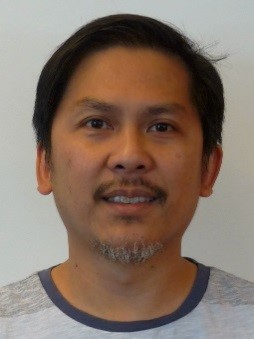
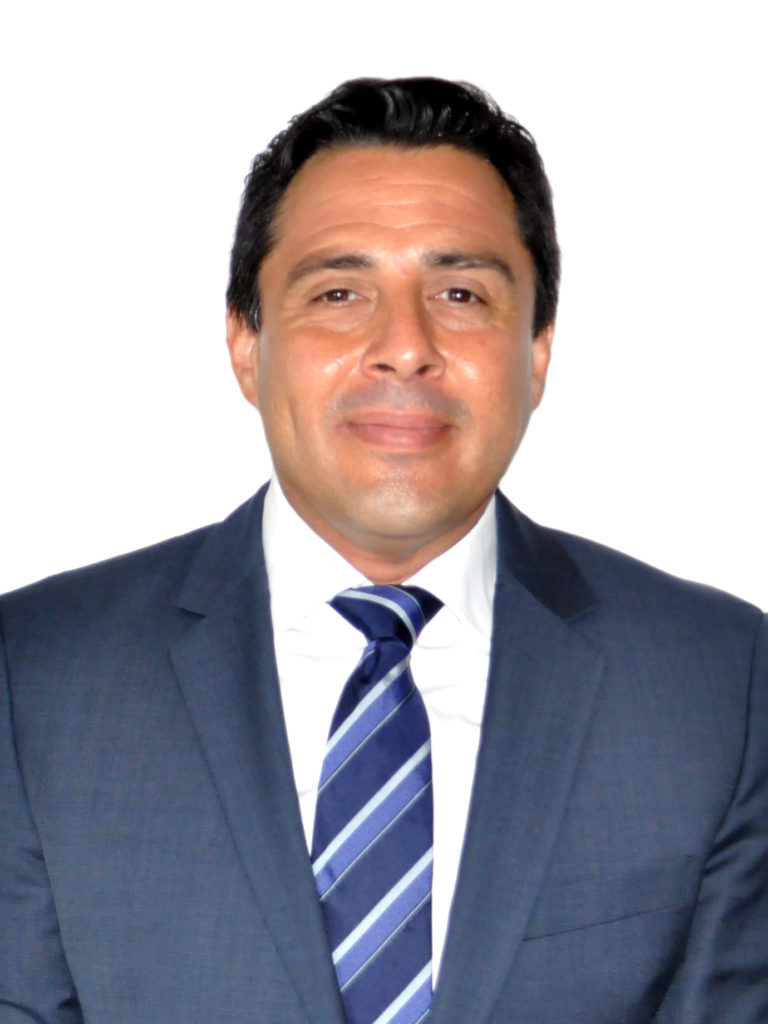
Stretched by the energy market realities of the past few years, the energy industry is going through continuous and rigorous cost-cuttings and optimizations. This low-cost environment often resulting in key data are not obtained while the need for high-quality reservoir characterization services still remains. Specifically, for geomechanical rock characterization which traditionally relies on the collection of core samples and subsequent analysis, and the acquisition of downhole logging suites. The geomechanical work has suffered under this cost pressure. As a result, many geomechanical models are built on assumptions that may introduce project uncertainties, rather than remove them.
After several years of development and pilot studies, SGS released to the market in 2020 its novel workflow for Automated Rock Properties by Indentation (ARPIN), an integrated approach using drill cuttings for geomechanical rock characterization.
Given that drill cuttings are usually available for any wells drilled, the ARPIN workflow facilitates the derivation of micro-rock mechanical properties for any section of the intersected geological horizons. The method combines detailed mineralogical analysis using QEMSCAN technology and nano-indentation measurements (Hofmann et al., 2015; de Block et al., 2014). Information from both methods is used to construct a digital rock model, where all relevant geological characteristics of the rock formations of interest are integrated, including e.g. layering, mineral distribution, and porosity. Finite element modeling is then used to calculate the bulk mechanical properties for each selected rock types. The results from the ARPIN workflow provide input for 1D geomechanical modeling as calibration of the dynamic (sonic logs) to static correlations.
In hydraulic fracturing activity, for instance, the application of drill cuttings analysis with ARPIN offers clear benefits when compared to the conventional core samples analysis. Continuous data availability of drill cuttings contributes to a more robust and reliable fracturing design. In that situation, core samples are typically recovered only from the zone of interest (expected producing zone) and have limited interval depth coverage (i.e., a point sample). Therefore, log data are required to provide further information about fracture containment. In contrast, analysis on drill cuttings can be conducted over continuous interval covering the entire zone of interest, allowing a more refined understanding of the mineralogical and geomechanical variability over any depth interval. As a result, the variations of static mechanical properties over the interval of interest can be built into the 1D geomechanical model. This, in turn, can be used to develop a more representative simulation of fracture geometry and prediction of fracture impact to reservoir production. In addition, with continuous drill cuttings availability, geomechanical information for the top and bottom barriers can be obtained, to gain additional insights that contributes to the success of the fracking campaign.
In this paper, we present the application of ARPIN to optimize the simulation of fracture geometry and prediction of fracture impact to reservoir production. Based on the case studies, we demonstrate that drill cuttings evaluation for geomechanical properties can lead to more reliable geomechanical modeling as well as tangible cost savings, thus successfully contributing to de-risking stimulation campaigns and optimizing overall project costs.
Tinker, Tailor, Soldier, … Consultant? Geophysical Tradecraft, 2022
Brennan, Brian (Independent Geophysicist, Lafayette, LA)
The title of this talk is a nod to the work of the late British author, John Le Carre, whose novels of espionage detail some of the tools and tactics, known as tradecraft, employed by the spies in his books as they try to keep their own secrets or extract the secrets of others as the East and the West vie for global superiority in matters military, political, and economic.
We as oil and gas industry geoscientists are also trying to extract secrets, not from Mother Russia, as in Le Carre’s books, but from Mother Earth. This presentation details a few of the tools available to working geoscientists as we try to crack the code of the earth’s history as it is revealed to us, albeit imperfectly, by seismic data.
Some of these tools, which blur the traditional line separating processor and interpreter by allowing the interpreter to condition his own data, are newly accessible to the individual investigator due to their availability on an SaaS, or Software as a Service basis. In this licensing model, users pay for the software only while they are using it, rather than purchasing a permanent license and paying annual maintenance or licensing the software annually, both of which can be prohibitively expensive for a small shop. The emergence of cloud storage and distributed computing puts almost unlimited processing power in the hands of anyone willing to learn new tradecraft.
Other interpretation and processing applications are available at no cost, with add-on, pay-per-use modules that can add powerful techniques such as Artificial Intelligence capabilities to an individual’s toolbox.
There are particularly good and affordable alternatives to excellent and elaborate but expensive forward modeling packages, which can help an interpreter understand the probable seismic response of hydrocarbon saturated sands in difficult-to-evaluate pressured reservoirs and class 2 AVO environments.
Finding oil and gas in old, long explored basins like South Louisiana is difficult. The easy pickings are long gone. Most of what’s left are accumulations that are subtle and/or different from what has already been found, and these will be revealed only with improved seismic data and a better handle on the properties of the rocks we seek to understand.
Geochemical Site Survey in the Cook Inlet, Alaska
Brightwell-Coates, Stephanie (Hilcorp, Houston, TX)

Recent multibeam sea bottom surveys of the Lower Cook Inlet, Alaska, show abundant pock marks commonly associated with natural gas seeps. It is expected that the seeps are active due to the clarity of the pock marks. Three cores were taken for geochemical analysis targeting these features over an area of approximately 15 square miles.
Analysis is underway for the recently collected samples but C15+ Gas Chromatography data thus far indicate a strong contribution of recent organic matter to the overall sediment signature. Continued work is focused on the source rock details for the observed hydrocarbons with the goal of better understanding the local petroleum system.
Advanced Rock Typing—An Artificial Intelligence Approach to Find Petrophysical Analogs
Cox, Katrina (Core Laboratories, Houston, TX)
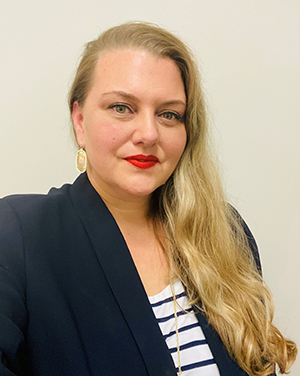
The need for petrophysical data used in reservoir characterization studies continues to grow despite virtually every oil and gas operator currently stressing the need for cost reductions. Geologic and engineering teams are being told that they must do without when it comes to recovering conventional core, long the gold standard for petrophysical data, and in some cases the recovery of even sidewall core samples is being severely constrained. Making do with less has become the new normal.
In response, Core Laboratories has developed Advanced Rock Typing (ART), an artificial intelligence (AI) approach to find physically measured analog petrophysical data that relies on representative high- resolution thin section images of cuttings, micro core samples and/or sidewall core samples. Leveraging Core Lab’s RAPIDTM petrophysical database, ART quickly finds and ranks analog matches and returns datasets that include physically measured porosity, permeability, capillary pressure, electrical properties, geomechanical properties, and nuclear magnetic resonance (NRM) data, as well as mineralogy and petrographic parameters.
What once required a significant capital investment to recover conventional core material, with its inherent increase in rig time as well as analytical wait time, now can be performed on representative drill cuttings, micro core samples and even sidewall core samples in a matter of days. The AI model analyzes the heterogeneity inherent in each thin section and finds analog matches that cover the range of that heterogeneity. Results are presented in an interactive web-based application which allows the user to explore the results and export data to third party analytical applications used in their existing workflows. ART includes rock types from throughout the world and is continuously being expanded with additional rock types and their physically measured petrophysical properties.
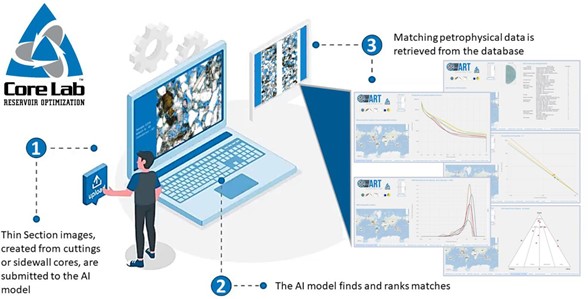
Palynofacies/Kerogen Analysis and its Importance in Paleoenvironmental and Geochemical Determinations
Demchuk, Thomas D. (PetroStrat Inc., Houston, TX), Katrin Ruckwied (PetroStrat), and Kimberley M. Bell (PetroStrat Canada Ltd., Calgary, Alberta, Canada)
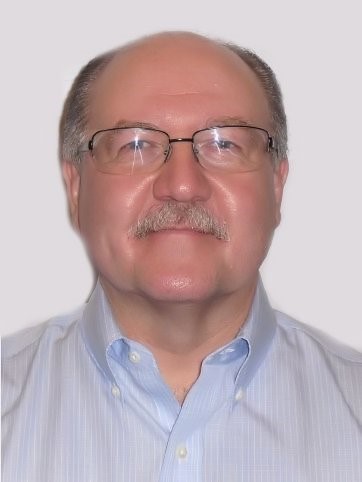
Palynofacies describes the total acid-resistant organic matter content of sedimentary rocks within a specific sedimentary environment (Combaz, 1964). Palynofacies analysis involves the identification of palynomorphs, plant debris and amorphous particles, their absolute and relative proportions, size spectra and preservation states (Tyson, 1995). When integrated with sedimentological and stratigraphic data, palynofacies adds a unique and significant aspect to paleoenvironmental interpretations. When integrated with geochemical information, it helps develop a greater understanding of a source rock, its quality, and the expected (or observed) hydrocarbon phase (gas versus oil). Palynofacies and its identified components is not to be confused with kerogen, which is a geochemical term referring to organic matter that is non-soluble in an organic solvent. Palynofacies refers to ALL organic components in a given sedimentary rock sample, whereas kerogen limits the organic matter to that which is non-soluble. Unfortunately, these two terms have been greatly confused and co-mingled over the years creating debate among palynologists, organic petrographers, and geochemists.
The visual identification and characterization used in palynofacies analysis is through reflected light microscopy with organic matter strewn on a thin section. The organic matter is liberated from the rock matrix through acid digestion: no other chemical processes are performed since this may affect both the content and visual aspect of the organic matter. For most studies, a semi-quantitative assessment of the palynofacies components is performed, and the terms abundant, frequent, common, and rare are adequate in describing the organic assemblage. For additional paleoenvironmental detail, 300 counts are performed of the organic matter components present.
In a broad sense, palynofacies components can be separated into marine and non-marine constituents, which can give a broad sense of hydrocarbon phase: for the most part, non-marine organic matter will result in gas, whereas marine organic matter will result in oil. The exceptions are non-marine lacustrine paleoenvironments where lacustrine algae will mature and subsequently produce oil. Important terrestrial components include pollen, spores, and algae, which can further be separated from the palynofacies assemblage to produce a palynology slide: these can then be analyzed further for chronostratigraphic interpretation. In the palynofacies assemblage, the color of pollen/spore can be utilized to determine maturation: the lighter the color of the pollen/spores, the less mature the rocks, and the darker the pollen/spores, the higher the maturity, which can be confirmed through vitrinite reflectance (%Ro) and geochemical analyses (e.g., RockEval/Tmax).
Case studies demonstrating the significance of palynofacies analyses will be discussed. For example, palynofacies analyses assisted in understanding why wells completed in the Niobrara Formation in a Wyoming field were producing different hydrocarbon phase from the same formation. Differences in the abundances of marine versus non-marine palynofacies components helped define parts of the field that were gas-prone, whereas other areas with abundant marine organic matter were oil-prone.
REFERENCES CITED
Combaz, A., 1964, Les palynofacies: Revue de Micropaléontologie, v. 7, no. 3, p. 205–218.
Tyson, R. V., 1995, Abundance of organic matter in sediments: TOC, hydrodynamic equivalence, dilution and flux effects, in R. V. Tyson, Sedimentary organic matter: Organic facies and palynofacies: Springer, p. 81–118.

Figure 1. A schematic diagram illustrating the transition of non-marine to marine environments, and the relative abundance of associated various palynofacies components. Note that non-marine constituents can be transported into the marine realm, and the ratio of non-marine to marine constituents can be used as an indicator of proximity to paleoshoreline.
SOUTHWEST LOUISIANA GEOPHYSICAL SOCIETY (SWLGS) LUNCHEON PRESENTATION: Direct Shear-Wave Seismic Survey in the Sanhu Area, Qaidam Basin, West China
Deng, Zhiwen, Rui Zhang*, Liang Gou, Shaohua Zhang, Yuanyuan Yue, Xuejun Chang, Yongguo Wu, Yan Wang, Yudong Ni, Zhihui Yan, Ting Gong, Haili Wang, Faquan Feng, Zhigang Liu, and Long Wu (Asterisk denotes speaker, University of Louisiana at Lafayette; all other authors, Bureau of Geophysical Prospecting, China National Petroleum Corporation, Zhuozhou, China)

The formation containing shallow gas clouds poses a major challenge for conventional P–wave seismic surveys in the Sanhu area, Qaidam Basin, west China, as it dramatically attenuates seismic P–waves, resulting in high uncertainty in the subsurface structure and complexity in reservoir characterization. To address this issue, we proposed a workflow of direct shear-wave seismic (S–S) surveys. This is because the shear wave is not significantly affected by the pore fluid. Our workflow includes acquisition, processing, and interpretation in calibration with conventional P–wave seismic data to obtain improved subsurface structure images and reservoir characterization. To procure a good S–wave seismic image, several key techniques were applied: (1) a newly developed S–wave vibrator, one of the most powerful such vibrators in the world, was used to send a strong S–wave into the subsurface; (2) the acquired 9C S–S datasets initially were rotated into SH–SH and SV–SV components and subsequently were rotated into fast and slow S–wave components; and (3) a surface-wave inversion technique was applied to obtain the near-surface shear-wave velocity, used for static correction. As expected, the S–wave data were not affected by the gas clouds. This allowed us to map the subsurface structures with stronger confidence than with the P–wave data. Such S–wave data materialize into similar frequency spectra as P–wave data with a better signal-to-noise ratio. Seismic attributes were also applied to the S–wave datasets. This resulted in clearly visible geologic features that were invisible in the P–wave data.
Note: Abstract reproduced with permission of the Society of Exploration Geophysicists from Deng et al., 2022, The Leading Edge, https://doi.org/10.1190/tle41010047.1.
KEYNOTE PRESENTATION: Foraminifers: A Bioindicator to Monitor Marine Pollution in North Africa
El-Ekhfifi, Salah S. (National Oil Corporation of Libya, Benghazi, Libya)

Abstract not available as of press time.
BIOGRAPHY: Salah El-Ekhfifi is an exploration geologist at the National Oil Corporation, Libya (NOC), since six years ago and he has published many papers and has delivered several presentations on diversified subjects or topics (locally and globally), including Tunisia oil and gas summit in 2019 and Africa oil week in 2018 in Cape Town. Mr. El-Ekhfifi joined the AAPG technical committee regarding MEDINA conference in 2022. He is the founding president of the Libya-Benghazi Chapter of the Society of Applied Geoscientists and Engineers and was the convenor of the Libya Special Symposium as part of the SAGE 2022 conference and exposition, 23–25 March, Lafayette, Louisiana, and Virtual.
Advanced Geothermal Technologies Applied to Geopressured Formations: The Gulf of Mexico, USA
Eros, Mike (Sage Geosystems, Houston, TX)

In 2020, the ~4 trillion kilowatt-hours (kWh) of utility-scale electricity used in the US came from fossil fuels (~60%), nuclear (~20%), and renewables (~20%) with wind, solar, and geothermal at 8.4%, 2.3%, and 0.4%, respectively (US Energy Information Administration, 2021). Geothermal energy accounts for less than 1% of the global utility-scale power generation, primarily driven by geographical constraints. Challenges for widespread geothermal utilization include exploration risks, low heat harvesting efficiency due to poor subsurface rock thermal conductivity, low efficiency of traditional turbine and power plant designs, and high capital costs of well and power plant equipment.
Temperature and pressure are key indicators for renewable energy resources: (a) geothermal heat from hot water production (hydrothermal) and (b) mechanical (hydraulic) energy from abnormally high brine water and trace dissolved gas pressures driven by trends in subsurface brine (non-potable) aquifer extent and compartmentalization. Temperatures above 300°F/150°C can be found along the US Gulf Coast within 10,000 ft of the surface, and often shallower (Loucks et al., 1979). These heat resources are primarily in the widespread Cenozoic sedimentary formations that have been historically exploited for oil and gas, but also prove to flow hot water at high flow rates in a temperature range suitable for power generation (100–250°C, >10,000 barrels of water per day; Bebout et al., 1983; John et al., 1998). Geopressured, deep brine-aquifer formations, providing high formation water pressures well above average, are also commonly found as shallow as 10,000–13,000 ft below sea level. These onshore and offshore resources are located along the Gulf of Mexico coast in the faulted salt-dome provinces of Texas and Louisiana, near Brownsville, Houston, New Orleans, and other population centers (Ocamb, 1961; Worrall and Snelson, 1989).
Advances in turbine design utilizing novel fluids for enthalpy harvesting in power generation, including the use of supercritical CO2 (sCO2) as a working fluid and novel sCO2 turbine design, show great promise to make geothermal power generation less risky and more economically feasible. Based on calculations using US Dept. of Energy Geothermal Program test sites in Texas and Louisiana demonstrating high-quality connected, hot pressured brine with consistent long-term heat flow, Sage Geosystems™ proprietary geothermal technologies increase baseload power generation capacity well above traditional organic Rankine cycle turbine technologies, and provide much cheaper electricity power generation potential on a Levelized Cost of Energy (LCOE) basis (Lazard, 2020). These new technologies targeting known resources have the potential to generate carbon neutral, or carbon negative, commercial quantities of baseload electrical power.
NOTE: References to be included in the SAGE Record conference proceedings.
Geochemical Characterization of Base Metals in Stream Water and Sediments in the Caddo Lake Watershed, Cass, Harrison, and Marion Counties, Texas
Faulkner, Melinda S., Melanie L. Ertons, and Joseph W. Watkins (Stephen F. Austin State University, Nacogdoches, TX)
The Caddo Lake watershed is located in northeastern Texas and encompasses much of Cass, Harrison, and Marion counties. The watershed is drained by major streams and tributaries flowing in an easterly direction over Eocene-aged rocks and sediments of the Wilcox and Claiborne groups, and empty into the western arm of Caddo Lake. Since 1995, Caddo Lake and some of its tributaries have been included on the State of Texas Clean Water Act 303(d) list by the Texas Commission on Environmental Quality (TCEQ) for impairment due to mercury content in edible tissue, depressed dissolved oxygen, base metal concentrations, and low pH values. The purpose of this multi-year study was to characterize base metal concentrations in stream water and sediments in the Caddo Lake watershed, and document the potential watershed transport and contribution to the impairment of Caddo Lake. Recent water (n = 58) and sediment (n = 116) sampling at 29 sites revealed copper, lead, and zinc concentrations within normal limits and below EPA actionable standards. Mercury concentrations were elevated at 21 of the 29 sampling sites, which could lead to methylation and bioavailability to organisms at all trophic levels.
Geopark Features and Characteristics in Libya
Fello, Nuri Mohamed (Nafusah Oil Operations B.V., Tripoli, Libya)
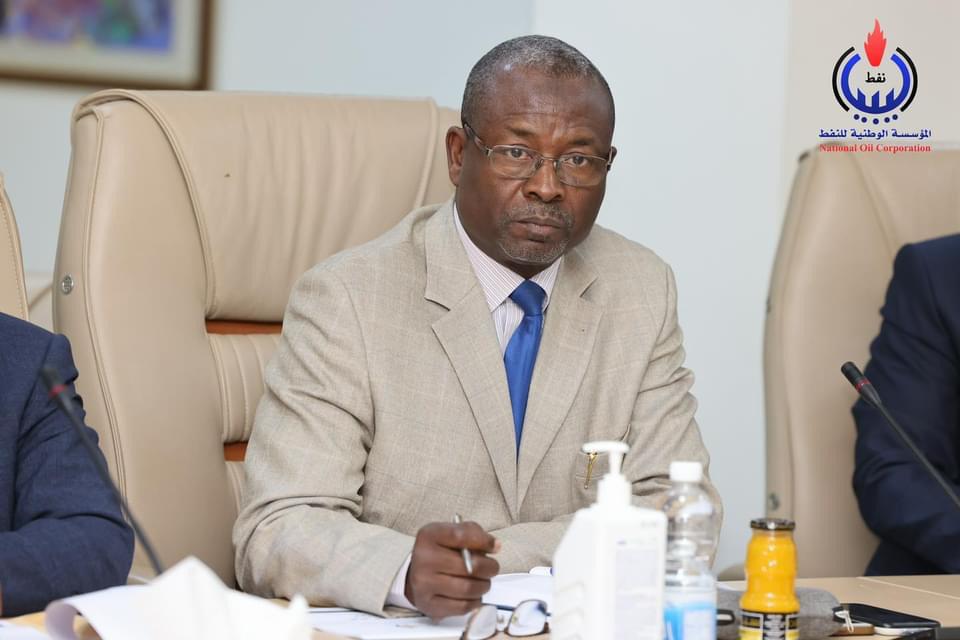
We aim through this work to present the scientific summary to introduce Geoparks and ways to preserve and manage the geological heritage in the State of Libya according to accurate scientific standards. Meanwhile, regard to the Arab countries, there is only one geological park, which is in the State of Morocco.
Through the scientific and practical discussion, we had a proposal to clarify the areas of geological importance in Libya, and the most important of these areas (Akakus Mountains, Al-Akhdar Mountain, Jabal Waw Al-Namous, Jabal Al-Dalam, and Wadi Tanezzuft). During the field studies, these sites were of great importance to the participating brothers in the symposium, and the coordinating team of the Geoparks project, mandated by UNESCO, explained the basic conditions that are supposed to be met for obtaining global approval for geoparks. During current time, it will be agreed to prepare a brief booklet containing information for a single geological heritage and a summary of all the geological features in the State of Libya, and it will be under the supervision of the UNESCO Regional Office in Cairo and the International Office in Paris.
Facies and Well Log Analysis of the Smackover Formation in the East Texas Basin, Wood County, Northeastern Texas
Ford, Merritt S., Melinda S. Faulkner, and Julie M. Bloxson (Stephen F. Austin State University, Nacogdoches, TX)

The Smackover Formation is an Upper Jurassic carbonate limestone sequence that occurs in an arc along the northern paleo-shoreline of the Gulf Coast, from South Texas to northwestern Florida. Generally, the Smackover overlies the Norphlet Formation and is capped by the Buckner evaporative bed, which typically serves as the petroleum system seal. The Smackover has been a prolific oil and gas producer since the 1922 discovery well, Richardson No. 1, in Union County, Arkansas. The majority of Smackover production in the Wood County, Texas, part of the East Texas Basin occurs downdip of the Mexia-Talco Fault Zone and is associated with salt anticlines basinward of the fault system. Due to enhanced porosity and permeability from extensive dolomitization in the upper oolitic shoal facies, this unit has been the primary target interval for conventional production in northeastern Texas.
Core collected from the Max J. Fletcher No. 3 in Wood County, Texas, in July 1993 has been the focus of an ongoing facies analysis. This core represents a 243 feet interval in the Smackover Formation from the East Texas Basin between the depths of 13,332 and 13,089 feet. The focus of this study has been to develop a core facies analysis in combination with X–ray fluorescence and thin section analyses. These data were used to correlate to the well log to create a type log for the Smackover in northeastern Texas. Results show decreasing dolomitization at lower depths, with upper facies influenced by the overlying Buckner Anhydrite. This correlation will help to further understand reservoir quality and trends of the Smackover in the northeastern Texas region and provide a key for developing Smackover subsurface maps and trends when correlating surrounding wells in the East Texas Basin. The detailed facies analysis will help provide additional information for depositional and diagenetic models for the Smackover Formation in northeastern Texas.
Geologic and Geomorphological Interpretation of the Mare Orientale Impact Basin Region of Earth’s Moon
Gray, Kyla S., and Melinda S. Faulkner (Stephen F. Austin State University, Nacogdoches, TX)
The Mare Orientale impact basin is located in the southern equatorial region of Earth’s Moon and is composed of mafic igneous rocks and ash displaced by primary and secondary impact events. The lunar rocks of the area range in age from 4.5 to 1 Ga making the geology and geomorphology of the area broadly defined. The study area is 1.24 million square kilometers of the Eastern Mare Orientale impact basin.
In order to interpret the geology of the area, various lithologic, topographic, and chronologic datasets were compiled in ArcMap. The topography of the region was constructed by using a high-resolution lunar digital elevation model from the NASA Goddard Space Flight Center using the Lunar Orbiter Laser Altimeter and SELENE Terrain Camera. Analyses of the Unified Geologic Map of the Moon from the USGS Astrogeology Science Center provided the data needed to determine lithology and ages of the geologic formations of the study area. From these data, a comprehensive history of the geologic and geomorphologic events was used to create a series of figures showing the stratigraphic and structural relationships of the geologic units. The incorporation of the current lunar geologic time scale enabled the construction of a generalized timeline of major events providing a more detailed geologic history of the study area.
Planning the Analytics for CCUS in Aquifer Project
Guidry, Toddy (Core Laboratories, Broussard, LA) and Kory Holmes (Core Laboratories, Houston, TX)

Carbon capture and sequestration has moved to the forefront of our industry as not only an ecological solution but an additional tool for enhanced production. But regulations are rightfully very strict, and the analytical program needed is very detailed and laborious. This presentation will provide an analytical outline to provide the datasets needed to obtain your Class VI well permit!
Injectability, confinability, and compatibility!
A Quick Look at Reservoir Fluid Behavior and Analysis for Earth Scientists
Guidry, Toddy (Core Laboratories, Broussard, LA)

Many times the only exposure a geologist gets to fluids is hearing the reservoir engineer ‘talk’ about getting ‘PVT samples.’ This presentation will take a quick look at fluids behavior, sampling, analysis, production trends and cover experimental methods performed as part of the blueprint for a comprehensive fluids program.
Outline of Topics Covered:
- Introduction to PVT Analysis? Why? When? What? Who?
- Reservoir Engineering 101
- Phase Behavior
- Fluid Properties, Fluid Diagnosis
- Production Trends for Oil and Gas Reservoirs
- Overview of Sampling Sources
- Surface vs. Subsurface
- Blueprint for Complete Fluids Program
- Chemistry
- Physical Properties, ‘PVT’ Experiments
- Flow Assurance
- Enhanced Oil Recovery
- Bringing it All Together–The Real Value of Fluids Analysis
- How are the Data Used
Biomarker Characteristics of Crude Oils from the Murzuq Basin, SW Libya
Hodairi, T. A. (National Oil Corporation of Libya, Tripoli, Libya) and R. P. Philp (University of Oklahoma, Norman, OK)
Twenty crude oil samples from the Murzuq Basin, SW Libya (A, R, and I fields in blocks NC115 and NC186) have been investigated by a variety of organic geochemical methods. Based on biomarker distributions (e.g., n–alkanes, isoprenoids, terpanes and steranes), the source of the oils is interpreted to be composed of mixed marine/terrigenous organic matter. The values of the Pr/Ph ratio (1.362.1), C30–diahopane/C29 Ts ratio and diasterane / sterane ratio, together with the low values of the C29/C30–hopane ratio and the crossplot of the dibenzothiophene/phenanthrene ratio (DBT/P) versus Pr/Ph ratio in most of oil samples, suggest that the oils were sourced from marine clay-rich sediments deposited in mild anoxic depositional environments. Assessment of thermal maturity based on phenanthrenes, aromatic steroids (e.g., monoaromatic [MA] and triaromatic (TA) steroid hydrocarbons), together with terpanes, and diasterane/sterane ratios, indicates that crude oils from Afield are at high levels of thermal maturity, while oils from R and I fields are at intermediate levels of thermal maturity. Based on the distributions of n–alkanes and the absence of C25–norhopanes in all of the crude oils analyzed, none of the oils appear to have been biodegraded. Correlation of the crude oils points to a single genetic family and this is supported by the stable carbon isotope values. The oils can be divided into two subfamilies based on the differences in maturities, as shown in a Pr/nC17 versus Ph/nC18 crossplot. Subfamily–A is represented by the highly mature oils from A field. Subfamily B comprises the less mature oils from R and I fields. The two subfamilies may represent different source kitchens of different thermal maturity or different migration pathways. In summary, the geochemical characteristics of oil samples from A, R, and I fields suggest that all the crude oils were generated from similar source rocks. Depositional environment conditions and advanced thermal maturities of these oils are consistent with previously published geochemical interpretations of the Rhuddanian hot shale in the Tanezzuft Formation, which is thought to be the main source rock in the Murzuq Basin.
For more information, the reader is referred to: Hodairi, T. A., and R. P. Philp, 2012, characteristics of crude oils from the Murzuq Basin, SW Libya: Journal of Petroleum Technology, v. 35, p. 255–271.
Geotourism Trends and Strategies
Hysert, Melany (Royal Roads University, Calgary, Alberta, Canada)

Geotourism is gaining momentum in the tourism sector as tourist appetites trend towards niche products, new experiences, and guided tours1. Geology landscapes have a long history of being popular with tourists. However, there is still more to be done. While many countries have regional geotourism strategies that include Geosites and Geoparks, destinations like Iceland and Australia have embraced geotourism on a national scale. In 2021 the Australian GeoScience Council launched a “National Geotourism Strategy” that sets the standard going forward. In this talk, geotourism strategy models will be reviewed along with a case study of how Iceland leveraged its geodiversity to rebuild its economy post-2008. Currently, the pandemic has prompted extensive tourism research and data-driven forecasting to boost economic recovery in the sector. Capitalizing on predicted traveler preference is the backbone of the tourism industry. Tourist motivations are often the basis for; product development, marketing campaigns, and commercial success. These themes will be tied to geotourism using extant academic research and real-world examples. In general, tourism is at the precipice of change. Demand for conservation, sustainability, and responsible travel were trending pre-pandemic. Added to this, post-pandemic trends are emerging and competition is fierce to attract tourism dollars. Destinations are in need of well-researched and executed product offerings, which creates an excellent opportunity to advance the field of geotourism.
1Ipsos MORI and TripAdvisor, 2022, Travel in 2022: A look ahead, <https://www.tripadvisor.com/TravelTrendsReportJan2022>.
Analysis of Geological Criteria for Borehole Disposal of Nuclear Waste within the Southeastern United States
King, David T., Jr. (Auburn University, Auburn, AL), Andrew Sowder (Electric Power Research Institute, Charlotte, NC), and Richard A. Esposito, Jr. (Southern Company Research & Development, Birmingham, AL)
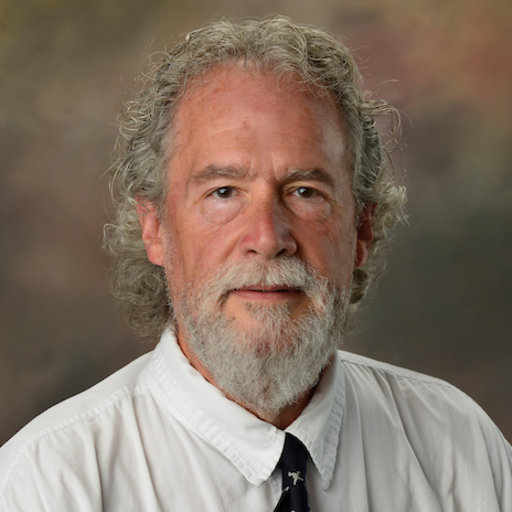
The southeastern US, specifically Alabama, Georgia, Florida, Mississippi, and South Carolina, is a relatively stable geological area of the North American craton, and because this is a significant consideration regarding deep borehole waste storage or disposal operations, the potential for this activity is discussed herein. Using a set of siting criteria for deep borehole storage and disposal operations recently published by the US Department of Energy (DOE), we show that there are significant areas of the southeastern US having bedrock of various lithic types that are likely acceptable for waste storage and disposal at appropriate, yet at relatively shallow depths. These DOE siting criteria are that the specific area under consideration (1) has relatively shallow aquifers and aquifer systems that can be avoided by choosing appropriate disposal locations; (2) is not near any shear zones, stress fields, or tectonic features; (3) is lacking in seismicity (the primary southeastern US exception is the Charleston, South Carolina, earthquake zone); (4) is devoid of relatively recent (Quaternary) volcanism and fault activity and very low in geothermal activity; and (5) is situated at a suitable distance from significant human development, petroleum drilling activity, and existing sites of and sources for human-produced radioactive contamination.This paper addresses the geological siting criteria for deep storage or disposal boreholes within the region’s main geological terrains and addresses the key types of rocks within each terrain (specifically crystalline rocks, shale formations, and rock salt bodies), which are generally agreed to have characteristics best suited to hosting deep borehole storage or disposal operations.
The Deliberate Search for the Chicxulub Impact Megatsunami Signature in Industry Seismic Data
Kinsland, Gary L. (School of Geosciences, University of Louisiana at Lafayette)
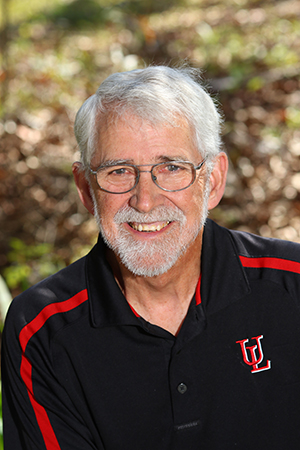
Several years ago, my graduate students and I were mapping Wilcox Group coals, with well logs, in northern Louisiana for coalbed methane resources. Devon Energy supported a couple students mapping over areas where they had considerable leased acreage. We figured that the coals might be mappable with industry 3D data even though the coals are relatively shallow. We sought and were given the top two seconds of Devon’s 7 mi x 11 mi Latt Lake 3D in southern Winn and northern Grant parishes, which we incorporated into our mapping and demonstrated the ability to map the coals.
Later I assigned a student to investigate the entirety of the two seconds by flattening the volume and extracting seismic geomorphology throughout. He brought me an image from his flattened volume very near the base of the Midway Shale (Fig. 1) and asked me, “What is this?” My response was, “OMG.” I had been working on various aspects of the Chicxulub Impact, the end Cretaceous event, since 1994 and recognized that the image was of megaripples from the tsunami which resulted from the impact. The location of the impact and the seismic image are illustrated in Figure 2. Having recognized the tsunami megaripples we imaged the mega-ripples more clearly with a time-structure map (Fig. 3).
We published our research in Earth and Planetary Science Letters (Kinsland et al., 2021… all coauthors were graduate students).
We now are seeking access to two other 3D data volumes from which we have seen evidence of megaripples from the tsunami…the Bodcaw survey in northwestern Louisiana from which I have been granted, by Seismic Exchange Incorporated, two 2D lines that image megaripples, and the Bayou Boeuf survey in central Louisiana within which I glimpsed what I think are megaripple features, as Fairfield/CGG quickly previewed the data at a recent Lafayette Geological Society meeting. We presently are in negotiations to achieve access to these volumes. We expect to learn more about the characteristics of the megatsunami from these two data sets than we have from the single small Devon dataset.
I am here today to encourage you to help us. We need knowledge of 3D datasets that image the base of the Midway Shale in areas in which the Gulf of Mexico paleo-bathymetry was sharply shallowing. This tsunami was gulf wide. We are interested in access to 3D datasets anywhere around the Gulf of Mexico.
If a company owns the data, we will seek to work with the owner. If a broker, such as Seismic Exchange Incorporated, controls the data, we will seek permission from the broker to allow us to work within a company that presently has access to the data. Your help, as well as that of the company and broker, which allows us access will be acknowledged in any publications.
I can best be contacted at: Gary L. Kinsland, glkinsland@louisiana.edu.
Quantitative Analysis of the Maximum Rate and Minimum Duration for a 200 km Stepwise Retreat of the Bindschadler Ice Stream at ~11.5 Cal Kyr BP
Kratochvil, Matthew E. (Louisiana State University, Baton Rouge, LA/Fugro Marine, Lafayette, LA) and Phillip J. Bart (LSU)
Small-scale morainal ridges on the middle continental shelf of the Whales Deep Basin partly record the rapid opening of a 200 Km grounding line embayment slightly after ~11.5 cal Kyr BP. The overlapping pattern of backstepped moraines indicates that the grounding line oscillated back and forth during the retreat. Published sediment fluxes were combined with new sediment volume mapping of the moraines to infer the rates at which the grounding line retreated. The analyses indicate that the rates of grounding line retreat on the eastern flank of the embayment ranged from ~490 m a-1 to 1300 m a-1. At the maximum rate of retreat, the embayment would have taken less than two centuries to open. The quantitative analysis provides a paleo-perspective on modern retreat. A paleo-modern comparison validates concern that glaciers in the Amundsen Sea sector are already experiencing an unstable retreat.
ALL-CONVENTION LUNCHEON PRESENTATION: Louisiana Law
Landry, Jeff, Attorney General of the State of Louisiana (Louisiana Department of Justice, Baton Rouge, LA)

Presentation will provide an overview of aspects of Louisiana oil and gas and other law.
BIOGRAPHY: Louisiana Attorney General Jeff Landry grew up watching his middle- class parents sacrifice to ensure their children’s success. Inspired by their guidance, Attorney General Landry joined the Louisiana National Guard while still in high school and worked his way through the University of Southwestern Louisiana as a police officer and sheriff’s deputy.
Recognized for his success as the owner of an oil and gas environmental service company, Attorney General Landry was selected Executive Director of the St. Martin Parish Economic Development Authority, helping recruit a Fortune 500 company and spur the economic energy corridor on Louisiana’s Highway 90.
At a later age, Attorney General Landry went to law school, starting part-time at Southern University then finishing his law degree at Loyola University. He then returned to Acadiana as a business attorney, helping job creators navigate the complexities of our legal environment.
In 2010, Attorney General Landry was elected to the United States House of Representatives where he had a 100% pro-life voting record and became known as a ferocious advocate of the Constitution, a leader on domestic energy policy, and a promoter of true reductions in wasteful government spending.
On January 11, 2016, Mr. Landry was sworn in as Louisiana’s Attorney General. In just his brief term as the State’s chief legal officer, Attorney General Landry has already upheld his pledge to make our communities safer by halting federal overreach, fighting public corruption, and arresting child predators.
Reliability of a Physics-Based Analytical Solution for Forecasting Impending Critical Flow Regime Transitions
Lapierre, Scott (Shale Specialists, LLC, Houston, TX)

To quantify and compare the accuracy of a series of progressively earlier-time forecasts generated from various available production decline analyses methods modified with the industry’s first physics-based analytical solution for predicting inevitable severe degradation in transient oil decline associated with transition to boundary-dominated flow (BDF).
Abundant production data from horizontal wells recovering oil from unconventional reservoirs indicates the widespread use of late-life assumptions for BDF transitions—regardless of well spacing and stimulation intensity—has proven overly optimistic. Reliable early-time production forecasts are critical to ensuring deployed capital is adequately offset by future revenue from production and shortening model-measure-optimize cycle times.
Gas-to-oil ratios were integrated into various production decline analysis methods after Lapierre (2021) in order to proactively modify initial transient forecast segments in anticipation of the inevitable transition to BDF. Forecasts were generated for ten multi-well drilling units in the Permian Basin which manifest historical BDF transitions. Hyperbolic transient decline segments were fit through progressively longer periods of early production data (i.e., first 12, 18, and 24 months) to generate initial, 2–stream transient forecast segments. The proactive termination of transient forecast segments after S. Lapierre (2021) was used to generate complete 2–segment, 2–stream production forecasts. Actual transition points are objectively determined from full production histories.
All ten selected cases manifest historical transitions to BDF within the first 30 months of production rather than within the multi-decade timeframe assumed by using static, late-life BDF assumptions of transition to BDF. Furthermore, all cases were observed to transition within a highly dynamic range of instantaneous hyperbolic declines all greater than 25% as opposed to the time-of-transition implied by the traditional use of single-digit minimum declines.
The time-to-transitions predicted by the application of Lapierre (2017) were observed to closely match those actually observed; however, the predicted transitions tended to be slightly later than the observed indicating a tendency for slightly optimistic recoveries.
The improved accuracy of early-time forecasts can shorten the model-measure-optimize cycle for horizontal shale oil infill drilling. Furthermore, the improved accuracy of early-time forecasts offered by the novel method for the proactive prediction of impending BDF from only transient data can greatly enhance the reliability of reserves analysis when only limited 2–stream production data is available.
Geochemical Characterization of the Louann Salt, Puma Field, Gulf of Mexico Basin, Using X–Ray Fluorescence (XRF) and X–Ray Diffraction (XRD)
Lesh, Brian, Melinda Faulkner, Julie Bloxson, and Christine Piela Cox (Stephen F. Austin State University, Nacogdoches, TX)
The Jurassic Louann Salt is an evaporite sequence deposited in the Gulf of Mexico Basin (GOMB). It is an important component of the GOMB petroleum system and influences the facies pattern in overlying strata and the distribution of petroleum stratigraphic traps. The Louann Salt is composed primarily of halite with intercalated anhydrites and silty- or sandy-halite intervals that can reach thicknesses in excess of four kilometers (~13,000 feet). Suture zones occur sporadically within the Louann Salt formed by the collision of allochthonous evaporite layers. The mineralogy and geochemistry of the suture zones are currently understudied and can be hazardous during drilling operations, potentially causing over-pressurization of the zone. Furthermore, these evaporite bodies are potential sources for critical minerals or rare earth elements, which can also lend insight into depositional conditions during the Jurassic.
The focus of this study was to determine the bulk geochemistry of the allochthonous evaporite layers within the Louann Salt in the Puma Field, offshore of the GOMB. Geochemical analyses were performed by handheld X–ray fluorescence (XRF) on approximately 600 cutting samples from the Puma West GC821–1 well, ranging from 2057 meters to 6528 meters (6750 feet to 21,420 feet) below the surface. X–ray diffraction (XRD) was used to determine bulk mineralogy of 10 samples to determine mineralogy and create a mineral model throughout the section of the suture zone within the Louann Salt.
XRD results in the suture zone within the Louann Salt shows that the mineralogy of the suture zone is predominantly composed of quartz, hematite, and smectite, with minor amounts of other clay minerals. The results of the XRF analysis show that the upper and lower boundaries of the Louann Salt can be determined by the inverse relationship between the chlorine and silicon element values. Chlorine values represent the Louann Salt interval, whereas the silicon values represent clay minerals. XRF analyses shows that the Louann Salt contains rare earth elements in the hundreds of parts per million (ppm). Rare earth elements such as Lanthanum (min = 0 ppm, max = 218 ppm, average = 80.8 ppm), Praseodymium (min = 0 ppm, max = 401 ppm, average = 74.8 ppm), Cerium (min = 0 ppm, max = 188 ppm, average = 64.5 ppm), and Neodymium (min = 0 ppm, max = 519 ppm, average = 150.5 ppm) are in concentrations equivalent to those where rare earth elements are being mined for economic value. This study provides insight into the depositional history of the Louann Salt and characteristics of the allochthonous bodies within the Louann for future mapping of the extent of these bodies in the GOMB.
KEYNOTE PRESENTATION: An Introduction to CCUS Laws and Regulations
Lieberman, Jeffrey D. (Liskow & Lewis, Lafayette, LA)
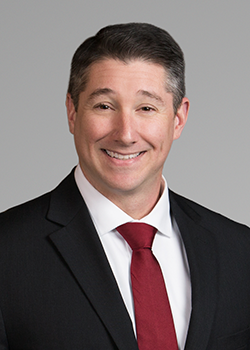
CCUS projects involve several discrete areas of law. This presentation will provide a general overview of the legal landscape for CCUS projects geared to the non-lawyer. These topics include property law, governmental regulations, and tax incentives.
The property law discussion will cover pore space rights, interactions between mineral and surface owners, and issues that arise when the land is owned by a governmental entity.
The regulatory discussion will introduce the process for approval of CCS storage facilities, Class VI well permitting, and the process for approval of enhanced recovery projects.
Last, several tax incentives available for CCUS projects will be introduced, including federal and state tax credits applicable to projects in Louisiana.
For more information, the reader is referred to: Lieberman, J. D., 2022, A primer on CCUS regulation in Louisiana: SAGE MAGE, v. 1, no. 1, p. 12 and 29.
BIOGRAPHY: Jeffrey D. Lieberman is an energy lawyer practicing in the Lafayette office of Liskow & Lewis. His practice includes title, conveyance, unitization, permitting, and regulatory issues involving oil and gas, renewables, and CCUS. Jeff regularly appears before the Louisiana Commissioner of Conservation and the State Mineral and Energy Board in Baton Rouge. He received his Law Degree, magna cum laude, from the Louisiana State University in 2008, where he was a member of the Louisiana Law Review.
SAGE ACADIANA CHAPTER KEYNOTE PRESENTATION: Musings on Gulf Coast CCUS—A Drilling Engineer's Perspective
Longman, Lindsay, Sr., P.E. (Independent Petroleum Engineer)

Abstract forthcoming.
BIOGRAPHY: Lindsay Longman, Sr. is a Licensed Petroleum Engineer with drilling engineering expertise and more than 25 years of international and domestic upstream industry experience. In addition to drilling engineering duties in the upstream exploration and production space, Mr. Longman has also been involved with several US Gulf Coast Carbon Sequestration projects both offshore and onshore. Mr. Longman has served on the American Association of Drilling Engineers Lafayette Chapter and currently serves as Vice President of Engineering for SAGE. Mr. Longman is a Lafayette native and petroleum engineering graduate from Louisiana State University.
Regional Lithofacies Stacking Patterns of the Upper Cretaceous Austin Chalk Formation in the Onshore Northern Gulf of Mexico
Loucks, Robert G. (Bureau of Economic Geology/Univ. of Texas at Austin, Austin, TX)
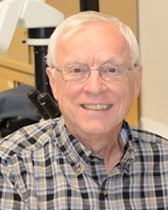
The Austin Chalk Formation continues to be an active exploration and production target in the northern onshore Gulf of Mexico (GOM). A regional study (Texas and Louisiana) of over 40 cores from the Austin Chalk has delineated the general lithofacies that compose the section. These lithofacies are the “building blocks” that are organized into repeating stacking patterns observed across the GOM. The recognition of these stacking patterns provides the general facies architecture to incorporate into exploration and drilling strategies. There are four general in-place lithofacies and several auxiliary lithofacies. The general lithofacies are differentiated by mineralogy and degree of bioturbation, which are characteristics that are linked to redox conditions and thus TOC content and source rock richness. Lithofacies 1 is a marly chalk that is highly bioturbated with both vertical and horizontal burrows. The general TOC is less than 0.5% and mean pyrite is 0.3%. Lithofacies 2 is a marly chalk to chalky marl that is highly bioturbated with only horizontal burrows and can be very argillaceous (to over 60%). TOC averages 1% and pyrite is 1.2%. Lithofacies 3 is poorly to a moderately laminated marly chalk and is sparsely horizontally burrowed parallel to laminae. Approximate mean TOC is 1.5% and mean pyrite is 1.4%. Lithofacies 4 is well-laminated marly chalk with rare or no burrows. Average TOC is 2% and mean pyrite is 2.1%. The progression from lithofacies 1 to 4 parallels an increase in anoxia and this is strongly mirrored by increases of TOC and pyrite abundance. Based on the predominance of a coccolith-hash matrix with planktic foraminifers and calcispheres in all lithofacies, a deeper shelf, below storm wave base depositional environment is proposed. Lithofacies 1–4 represent background sedimentation; they may be punctuated by the auxiliary lithofacies which represent discrete events. In the upper Austin Chalk (Maverick and San Marcos Arch areas), volcanism was active and an extensive mass-wasting complex formed (debrites and hyperconcentrated flow deposits). In this interval, and less common in the other Austin Chalk intervals, altered ash beds are present. The lithofacies patterns are in part controlled by the paleogeographic features present during Austin Chalk time. In the deeper Maverick Basin, East Texas Basin, and areas in Louisiana away from the Sabine Arch, organic-rich lithofacies 3 and 4 are common in the lower part of the section with lithofacies 1 and 2 dominating the upper part of the section. On the San Marcos Arch and near the Sabine Arch, lithofacies 3 and 4 are rare and lithofacies 1 and 2 dominate. The distribution of lithofacies 3 and 4 control source rock potential of the Austin Chalk. Porosity is also in part controlled by lithofacies; therefore, the understanding of lithofacies is a basic requirement for approaching exploration of the Austin Chalk Formation.
A Primer on Mineral Rights in Louisiana
Madere, Caleb J. (Liskow & Lewis, Lafayette, LA)

This presentation provides an introduction to four mineral rights in Louisiana: the mineral lease, mineral servitude, mineral royalty, and executive rights. The presentation will cover how these rights are created, how they can be maintained, how they are terminated, and common issues that may arise during their existence.
Microfacies and Mineralogical Studies on the Shore Zone of Tobruk City, Libya
Masoud, Mohamed A. Mohamed (Natural Resources Department, Faculty of Natural Resources and Environmental Sciences, Tobruk University, Tobruk, Libya)

The present work deals with the study of the nature and composition of the different geomorphic units of the shore zone of Tobruk coastal area, Libya. The area lies at 150 km from the Egyptian border on the Mediterranean Sea coast and stretches for 40 km from Wadi Elsahal west of Tobruk to Wadi Ras buad in the east. Two field trips (December 2018 and January 2019) were carried out to select areas of interest for geomorphology. Consideration was given to collect and describe different geomorphic units on the coastal zone. These include: sea cliffs, sand beaches, sand dunes, and beachrocks. From these sub-environments, 17 thin sections were prepared for the determination of microfacies and thirty-seven samples were chosen from the exposed different cliffs, beach rock, beach sand, and dunes in the coastal area of Tobruk. The Olympus polarizing microscope BX51 was used for thin sections petrographic description and photomicrographs were taken digitally. The depositional environments and the subsequent diagenetic changes were determined. Microfacies associations of limestones were classified using the classification of Dunham (1962) and the modifications of Embry and Klovan (1971). X–ray powder diffraction analysis was carried out on raw samples for their bulk mineralogy. Samples were finely ground to pass a 200–mesh sieve. X–ray diffractometer type PW3710 at the Metallurgy Institute of Minerals, Helwan, Cairo, Egypt, was used. Instrumental settings employed were Ni–filtered and CuKα radiation at 40 kV and 30 mA. The scanning range was between 2Ɵ 3˚–60˚at scan speed 2Ɵ 2˚/min. The X–ray diffractometer is computerized to measure the peak diffraction in 2Ɵ and d spacing (Å). The identification was confirmed by computer-aided search of the PDF database obtained from the joint committee on Powder Diffraction Standard—International Centre for Diffraction Data (JCPDA–ICDD, 2001). Examination of the 17 thin sections proved the presence of different microfacies associations and the rock cliffs are represented by the Al Khowaymat Formation. These include: echinoderm wackestone, algae echinoderm packstone, sandy peloidal packstone, echinoderm bivalve grainstone, mixed grainstone, echinoderm bivalve floatstone, oncoid rudstone, and echinoderm algae rudstone. These microfacies were deposited in restricted environments such as shallow open lagoons and bays, mid ramp setting, shallow energetic marine conditions with high agitation, inner ramp setting, open and restricted shallow platforms, and finally tidal flats. Mineralogical aspects show that calcite is the predominant carbonate mineral recorded in the rock cliff terraces, while high Mg–calcite is dominant in the beachrocks associated with aragonite and dolomite indicating their recent origin from beach sands. The bulk mineralogy of sand dunes is very significant, reflecting the dominance of carbonate minerals; high Mg–calcite, calcite, aragonite and dolomite over the detrital minerals indicate that they were derived from beach sands.
TECHNOLOGY SHOWCASE PRESENTATION: Subsea Sampling
McCreless, Jacob (Proserv, Houston, TX) and Richard Barr (Proserv, Aberdeen, Scotland, UK)

Operators are required to conduct analytical testing for a variety of reasons, including reservoir monitoring, flowmeter calibration, developing an injection chemical concentration profile, or determining local contamination. Clearly what is sampled and how the sample is collected are dictated by these requirements. Additionally, sampling method and the sampling operation itself will have a direct impact on the integrity of the sample, and by effect, how representative the sample is of the production fluid. And the significance of the sampling stage cannot be overstated.
If the sample is not representative of the original production fluid from which it is collected, analysis and data garnered from the analysis will not be representative of the fluid no matter how good the analytical method is or how carefully the analysis is performed.
The benefit of sampling is, therefore, to obtain data for which an opinion can be derived through enhanced understanding of the chemistry at source. For subsea samples, the insight obtained can stand to provide a range of benefits including:
- Chemical optimization
- Reservoir management
- Allocation and metering
- Leak rate determination
- Scale squeeze and pigging
Operationally, subsea sampling removes the requirement for shutting-in wells which in-turn means production efficiency can be enhanced as the downtime for collecting samples is greatly reduced.
The ability to safely capture and contain samples from subsea is a testament to advances in engineering. Subsea sampling technologies comprise the use of an interface (Diver or ROV), and a specifically designed and certified subsea sampling system.
There are many different styles of System available in the marketplace with the main systems and benefits highlighted in Table 1.
Subsea sampling from a production system requires the extraction of fluids from a live process and the equipment need include a suitably qualified storage module for the collected fluid, slops containment, and back-flushing. This storage module should have the capability of maintaining the integrity of the sample temperature and pressure at the well operating conditions. This ensures the samples are maintained (as captured) during their transfer to the surface and onwards to the onshore laboratory for analysis.
Furthermore, where the subsea interface is already being deployed for other maintenance, inspection and / or intervention projects, the high-cost assumption placed with subsea sampling is dramatically reduced.
Table 1. Styles of subsea systems and their benefits.
Subsea System | Depth Limitation | ISO Baric | ISO Thermal | System Sample Volume | Use |
ROV Weep and Seep | 3000 m | No | No | Up to 4 Liters | Composition & Leak Rate |
ROV Underslung | 3000 m | Yes | Yes* | Up to 12 Liters | Chemical Free, Composition, Integrity, Flow Assurance Meter Calibration, Squeeze Returns, Tracer Detection, Maintain Production Uptime, Cleanliness |
ROV Wired | 3000 m | Yes | No | Up to 200 Liters | Chemical Free, Composition, Integrity, Flow Assurance Meter Calibration, Squeeze Returns, Tracer Detection, Maintain Production Uptime, Cleanliness |
*Limited, depending on requirements
Achieving Long Term Sustainability and Carbon Sequestration in the Louisiana Coastal Zone Using Dredged Sediment
McLindon, Chris (McLindon Geosciences, LLC, Mandeville, LA)
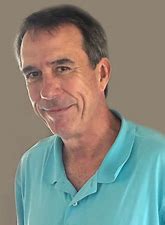
At a basin-wide scale the wetlands of coastal Louisiana have been built and maintained by river-borne sediment primarily transported by the Mississippi River system. At more local scales individual marsh platforms have often maintained elevation without the direct influx of river-borne sediment. In the latter stages of the delta cycle for any given delta lobe, the main river channel has usually avulsed to another portion of the delta plain and may be providing no direct sediment input to the area. Coastal marshes that have maintained elevation for long periods of time by sediment accretion are shown to have significant rates of carbon sequestration.
A detailed review of a particular marsh platform in Plaquemines Parish shows that with minimal influx of river-borne sediment, the area experienced sediment accretion rates in excess of 9 mm/yr for most of the last decade, as measured by stations in the Coast-Wide Reference Monitoring System (CRMS). The maximum rates of sediment accretion on the marsh platform occurred in a berm that generally parallels the outer edge of the marsh platform. These sediment deposits are the result of the transportation of sediment onto the marsh platform by tidal flux. Rates of edge erosion have been measured along the same marsh platform, and it appears that the volume of sediment derived from edge erosion is much too small to account for the volume of accretion occurring on the platform. It is likely that sediment is being eroded from the bottom of the bays adjacent to the marsh platform and carried in by the tides.
Supplementing this natural process of sediment transportation and accretion with dredged sediment could allow for the long-term sustainability of this type of marsh platform. Sediment berms could be deposited along the edges of the marsh platform. Over time these sediment berms would be washed away, but a significant volume of the sediment would be carried onto the marsh platform. Placing the berms along the marsh edges would serve the dual purpose of mitigating the rates of edge erosion, which would further enhance sustainability. This process could be repeated over time.
Causes and Effects of a Late 20th Century Fault Slip Event in Coastal Louisiana
McLindon, Chris (McLindon Geosciences, LLC, Mandeville, LA)

Wetlands loss in the delta plain of coastal Louisiana is best understood as an episode that peaked in the late 20th century, and has been generally declining for the past three decades. Losses were concentrated in the Barataria and Terrebonne hydrologic basins, as well as some intense hot spots in the Mississippi River Delta. This land loss episode had a strong temporal correlation with an episode of higher subsidence rate estimates derived from tide gauge records (Penland et al., 1988) and elevation benchmark leveling surveys (Shinkle and Dokka, 2004). Many of the major hot spots of wetlands loss associated with this episode are located along the surface traces of major faults, and it appears that a late 20th century fault slip event was a principal cause of increased rates of subsidence. Wetlands loss was primarily a function of the submergence of marshes on the hanging walls of the faults.
A possible cause of the fault slip event in the Louisiana delta plain is suggested by the sites of the subsidence hot spots relative to the distributary channels of the last few historical deltas and the surface traces of the major faults. The timing of the fault slip event suggests a slow build-of surface stresses due to abnormal sedimentary loading in the 18th and 19th centuries and a release of that stress caused by a triggering event in the last three decades of the 20th century. Sediment loading would have been anomalously high across the delta plain in the 19th and early 20th centuries due to high suspended sediment loads in the Mississippi River associated with the spread of agriculture across the basin. A trigger mechanism may have been provided by a period of high river stages in the 1970s which would have dilated surface aquifers throughout the distributary channel network causing changes in stress fields where the distributary channels crossed the major faults.
The implications for coastal sustainability are striking. The hot spots of wetlands loss are for the most part hot spots of higher subsidence rates associated with faults. The objective of most coastal sustainability projects is to build and maintain the elevation of the marsh surface. There is a much lower probability of maintaining elevation in areas with higher subsidence rates. Conversely, stable areas outside of the subsidence hot spots have been effectively maintaining elevation for decades through natural sediment accretion. Sustainability projects that seek to work with nature by supplementing natural accretion on stable marsh platforms will be the most effective.
Using Geochemistry to Understand Production Gas-Oil Ratio
Michael, Eric, and Craig D. Barrie (Applied Petroleum Technology, The Woodlands, TX)

One of the most common questions in early appraisal and development of either conventional or unconventional reservoirs is understanding the primary control on production yield (stb/mmscf) or gas-oil ratio (GOR) (stb/scf). Fluid and/or rock based geochemistry can be used in conjunction with engineering principles to understand what the primary mechanism(s) are that control the production yield. In some scenarios, yield can be improved, but in others not. Understanding the primary mechanism on production yield can lead to improved well completions for development of the existing assets or a pivot to testing different pressure and temperature or trap style reservoirs with higher liquids content potential. This presentation focuses mostly on general application principles and introduction to some specific analytical geochemical methods. The main produced yield control mechanisms that are readily identifiable from analytical geochemistry methods are production fractionation, source rock quality, geologic fractionation, and source rock or reservoir thermal maturity.
Biostratigraphical Review of the Al Hilal Formation at the Al Hilal Anticline Environ in the Ras al Hilal Region, NE Libya
Muftah, Ahmed M. (Department of Earth Sciences, University of Benghazi, Libya)
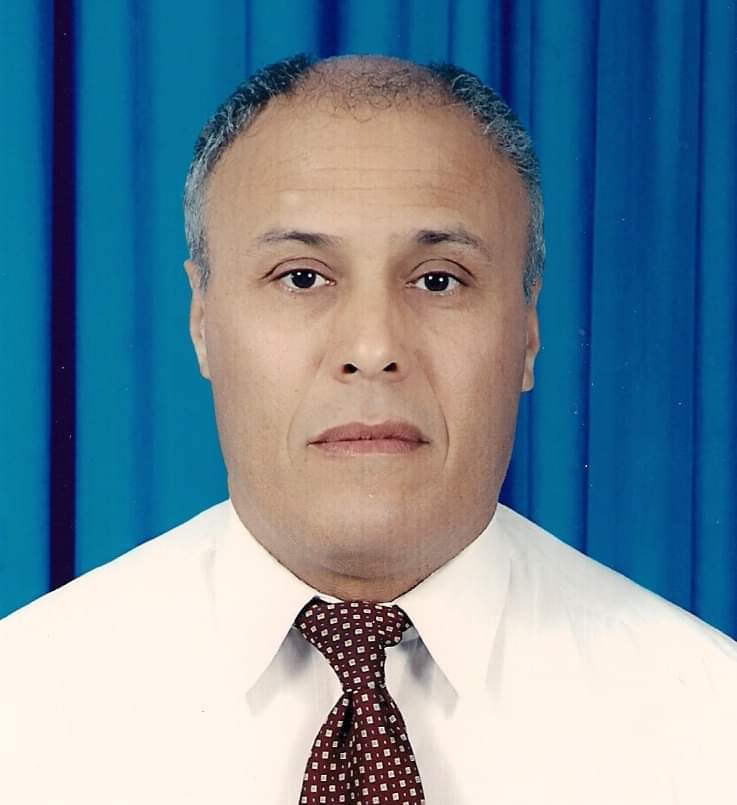
The precise axis of the Al Hilal anticline core is discovered at the mouth of Wadi al Qalah and along the Wadi al Qalah course at Ras el Hilal region in northeastern Libya. The newly discovered Al Hilal anticline axis is re-plotted on the structural map which was delivered earlier by El-Amawy et al. (2011). The Al Hilal Formation which represents the oldest rock unit in the coastal region of Al Jabal al Akhdar is exposed by the anticlinal fold. On the other hand, the Ghwt Sas anticline was responsible to the cropping out of Baniyah Formation (“the lateral equivalent of the Al Hilal shale”) in the central part of Al Jabal al Akhdar. Nine samples were collected from the mouth of Wadi al Qalah (the anticline core) and nearby, allowing for the revision of the previous foraminiferal biozones. The retrieved foraminifers from the processed samples were predominantly planktic assemblage belong to the oldest Concavatutruncana concavata biozone (early Santonian) in the mouth of Wadi al Qalah, and the C. asymetrica biozone (late Santonian) represents the upper biozone inside the course of Wadi Al Qalah valley. This study confirms that the older biozones recognized earlier in the area by Barr and Hammuda (1971) and Barr (1972) are not proved at the oldest exposed part in the anticlinal core.
Developing a Palynological Biosteering Zonation of the Wilcox Group, Alaminos Canyon, Gulf of Mexico
Nordstrom, Tiffany, and Sophie Warny (Department of Geology and Geophysics & Museum of Natural Science, Louisiana State University, Baton Rouge, LA)
Biosteering is a high-resolution biostratigraphic technique that can be critical in the exploration of reservoirs. It involves real-time monitoring during the drilling of a borehole to determine the position of the drill bit within the reservoir interval. This can be done using a pre-established biozonation scheme constructed from palynofacies. For this study, data from a deepwater well from the Alaminos Canyon block (AC 857#1) was donated by Royal Dutch Shell to the Center for Excellence in Palynology (CENEX) for palynological analysis. This well penetrates the Paleogene Wilcox Group sediments, and while the palynology of the onshore Wilcox Group is fairly well documented, the deepwater palynology is largely proprietary. Preservation of calcareous microfossils, like nannofossils and foraminifera, is also often poor in the deepwater Wilcox Group, so the development of a deepwater palynological biostratigraphy has important practical applications in the Gulf of Mexico. Ditch cuttings from this well with measured depths between 4000 m and 5200 m were processed into 128 samples. Pollen, spore, and dinoflagellate cyst assemblages from these samples are currently being identified and tabulated. The presence, absence, and abundance data of these organic-walled microfossils will be used to construct a biozonation scheme, employing mostly pollen and spores, but also with a limited focus on dinoflagellate events. This study will provide the first nonproprietary palynological analysis of deepwater Wilcox Group sands, thus providing stratigraphic control for ongoing and future Gulf of Mexico oil exploration.
KEYNOTE PRESENTATION: Sand Control Method Selection
Ott, William K. (Bill), P.E. (Well Completion Technology, Houston, TX)
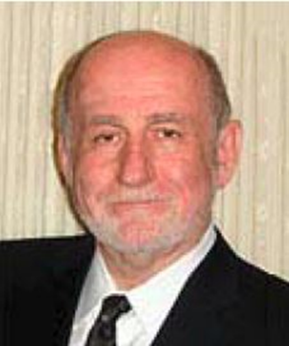
Sand control methods may be classified as mechanical bridging stand-alone equipment installations such as slotted liners, punched slot screens, prepacked screens, shrouded metal mesh screens, and expandable screens. Other means of control are gravel packs, frac packs, and sand consolidation by injection of chemicals into the formation to provide in situ grain to grain cementation.
Controlling sand flow by maintaining a high level of grain-to-grain stress in an unconsolidated sandstone formation within the borehole wall can now be included as an additional method. The application of self-lining screens has recently demonstrated this.
Factors to consider in selecting the sand control method include:
- Initial sand control cost
- Expected reliability and longevity
- Effect on well productivity
- Remediation cost
- Formation sand quality
- Level of reservoir pressure depletion, and
- Sand production history.
BIOGRAPHY: WILLIAM K. (BILL) OTT, P.E., is an independent petroleum consultant based in Houston, Texas, and founded Well Completion Technology, an international engineering consulting and petroleum industry training firm established in 1986. Before consulting and teaching, Mr. Ott was a division engineer for Halliburton’s Far East region based in Singapore. Previously he was a research field coordinator for Halliburton in Duncan, Oklahoma. Mr. Ott received his BS Degree in chemical engineering from the University of Missouri (1972). He is a registered professional engineer in Texas, a 45–year SPE member, and an SPE Distinguished Lecturer (2007–08) on the Selection and Design Criteria for Sand Control Screens. He regularly works with and on wells requiring sand control, principally in East Asia and South America. He has conducted technical petroleum industry courses worldwide and written numerous technical papers relating to well completion and workover operations. He co-authored World Oil’s Modern Sandface Completion Practices and Mature Oil & Gas Wells Downhole Remediation handbooks. Mr. Ott teaches a Sand Control Technology course several times each year in the U.S., Canada, Southeast Asia, and South America.
KEYNOTE PRESENTATION: Who Owns the Pore Space? Legal and Ethical Debates for Geologic Sequestration of CO2
Porter, Dawn (Stratum Reservoir, Midland, TX)

Recent climate change initiatives have driven politicians, investors, and scientists to search exigently for CCUS and CCS opportunities. Paramount to the discussions are the viability factors of facilities (porosity, permeability, retention capability) as well as the economics around cost, carbon credits, and the rates of delivery while mitigating CO2 safely as an urgent business imperative. Looming legalities for the ownership of the void will challenge current case law in the pyretic battle for the lucrative compensation contingencies. Solving CO2 sequestration technical and legal challenges will require geoscientists’ expertise to craft the right solutions.
BIOGRAPHY: Dawn Porter is a professional geoscientist and landman with over 15 years of oil, gas, and energy experience. In her early career she was a professional skier and firefighter, studying Geological Engineering, then pivoted into the energy industry employing advanced geochemistry in real-time at the wellsite. She holds a BS in Technology Management and Earth Studies from UVU, an MBA from WGU-Texas and is a certified Registered Landman. She has worked in the upstream energy industry across technical roles in exploration, production, and oilfield services and works for Stratum Reservoir, an industry leader in rock, fluid, and stable isotope analysis for the energy, mining, and agricultural industries that can provide CCUS solutions. Her interests include food tourism, golfing, motorcycles, and forensic genetic genealogy. She recently served as a chair at the SPE Permian Basin Oil and Gas Recovery Symposium and keynoted at the 2022 NAPE AAPG workshop on Trends in Oil, Gas, and Energy: Assets, Data, Finance, Technology and spoke at the 2022 SPE/SEG/AAPG Energy in Data Conference. Her professional work centers around emerging technologies coupled with preservation of time-proven best practices.
Induced Seismicity by CO2–Sensitive Polyacrylamide Solution Injection for CCS Applications
Quan, Laihmen, Kelsey Crane, and Maryam Mirabolghasemi, (Mississippi State University, Mississippi State, MS)

In October of 2021, world leaders met at the G20 Summit and the United Nations Climate Change Conference to address one of the most pressing international issues yet, global warming. Efforts to accelerate technologies to achieve carbon neutrality was pledged, therefore alternatives such as Carbon Capture and Storage (CCS) become increasingly appealing. CCS is a way to capture excess carbon dioxide (CO2) safely and permanently from anthropogenic sources and relocate it in geological formations such as depleted oil and gas reservoirs. Even though CCS seems to be a very promising option, it does come with its own limitations. Leakage pathways, such as faults and fractures, can compromise the effectiveness of CCS, therefore; a preventive approach might prove practical. Sealing agents that activate under high concentrations of CO2 can be injected into the storage site and block the leakage pathways. CO2–sensitive polyacrylamide gel (CO2–SPAM) is a polymer gel solution that utilizes CO2 as a crosslinker and gels upon contact with CO2. Despite the promising potential of this preventive approach, concerns arise when the pore pressure near a fault zone increases due to the injection of highly viscous gel solution. This increased pore pressure causes an imbalance in geological stresses in the fault zone, which leads to induced seismicity. In this study, the severity of induced seismicity is investigated as a result of CO2–SPAM injection into the Raton Basin for a gas-producing well. The necessary geological and well data is collected to estimate the pore pressure at a nearby fault and rheological tests are conducted to identify CO2–SPAM’s response to deformation and viscosity. Finally, the calculated pore pressure is used to determine the variety of angles at which fault planes can be reactivated while also deriving a criterion that will indicate the pore pressure necessary to induced seismicity in a non-active fault zone.
Quantifying the Three-Dimensional Depositional Mechanics of Turbidity Currents in Minibasins across the Fill to Spill Transition
Reece, J. Kevin (Department of Earth and Environmental Sciences, Tulane University, New Orleans, LA), Robert Dorrell (Energy and Environment Institute, University of Hull, Hull, UK), and Kyle M. Straub (Tulane)

The structure of many continental margins reflects a competition between the dynamics of mobile substrates that can produce bathymetric depressions (i.e., minibasins) and the depositional mechanics of turbidity currents that fill depressions. Depending on parameters that define minibasin geometry and the sediment transport capacity of turbidity currents, flows either get trapped or can (partially) surmount a minibasin and continue downslope. Prior experiments quantified this fill-to-spill transition in 2D, but we lack detailed knowledge of the depositional mechanics of these flows in 3D. We explore these dynamics in physical experiments where we release 3% excess density flows that are Froude critical into a circular minibasin with 10% side wall slopes and a basin depth that is 2.5 times the input flow height. Over a sequence of experiments, we alter the input flow width, and thus the flux of sediment released into the basin. This drives responses that span the fill (i.e., sediment deposited in basin equals sediment released to basin) to spill (<50% trapping of input sediment) transition. We collect time lapse photography, repeat surveys of topography, time series of sediment concentration and velocity at basin center, and maps of the 3D flow structure during equilibrium conditions. Initial results identify and define the structure of recirculation cells that distribute sediment in ponded flow. We also observe a link between input sediment flux, the equilibrium structure of velocity and sediment concentration profiles, and the resulting onlapping height of turbidites with basin walls. Specifically, greater influx rates result in less sediment stratification and greater onlapping heights.
Oklahoma Saline Reservoirs for Carbon Capture, Utilization, and Storage (CCUS)
Seyedolali, Abbas (Oklahoma Geological Survey/University of Oklahoma, Norman, OK/GXStat, LLC, Wichita, KS), Emilio J. Torres-Parada (OGS/OU), Kurt Rottmann (RKR Services Company, LLC, Bethany, OK), and William Full (GXStat, LLC, Wichita, KS)
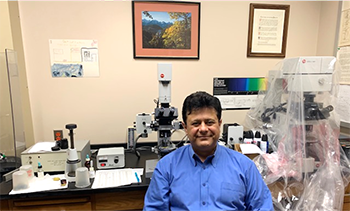
Reduction of anthropogenic carbon dioxide (CO2) emissions is an important endeavor that can mitigate climate change. Carbon Capture, Utilization, and Storage (CCUS) has received considerable attention and is poised as a new avenue of research and development. In the state of Oklahoma there are many possible reservoirs for CCUS, but for some reservoirs hydraulic fracturing and disposal water injections have variously impacted the potential for safe CCUS development. Importantly, there are induced seismic hazards within and around reservoirs already developed for petroleum production or waste-water disposal.
One of the most important hosts of saline reservoirs in Oklahoma is the Ordovician Arbuckle Group. We are in the process of investigating whether produced reservoirs within the Arbuckle Group have sustained damage from hydraulic fracturing or wastewater injection that render them unsuitable for CCUS. We have concluded, based on our analyses, that there are Arbuckle reservoirs that may be suitable and there are those that may not be suitable based upon internal and external characteristics such as depositional history, fluid migration, diagenesis, and cap rock integrity. We are also attempting to define other horizons that have potential for CCUS.
We have selected Oklahoma counties, seven thus far, where the saline reservoirs have the desired characteristics for CCUS, including seals with the necessary capillary pressure capacity, mechanical integrity, and geometric closure. There are two primary risks in these new reservoirs we are assessing. In the areas where the base seal is absent or the seal is near sub-reservoir faults, CO2 injection could affect the basement rocks; therefore, we are modeling the impact of CCUS in these cases in damaging lower horizons. A second risk involves the formation of acidic brine which could dissolve the caprock and compromise containment.
These new saline reservoirs are contained in the Ordovician Simpson Group, Upper Ordovician–Lower Devonian Hunton dolomite in the Arkoma Basin, Pennsylvanian Morrowan age rocks (Cromwell sand), Mississippian Chat, and possibly the deeper, unaltered Arbuckle Group in the Anadarko and Arkoma basins. These prospective reservoirs were selected based on reservoir geometry and characteristics defined by well logs, cores, well cuttings, mercury injection capillary pressure (MICP), thin sections, and electron microprobe analyses (EPMA).
Economic considerations and public and governmental acceptance are additional important considerations in this process that needs to be carefully examined. The available federal 45Q tax credit makes it an attractive process for the companies to get involved, which can lead to viable and economically sound projects that can be implemented in a relatively short time.
Tar Mapping Using Low Molecular Weight Volatiles Signatures: Case Studies from the Alaskan North Slope
Smith, Christopher M. (Advanced Hydrocarbon Stratigraphy, Tulsa, OK), Caleb Conrad (Baker Hughes, Anchorage, AK), Zachary Spath (University of Alaska at Anchorage, Anchorage, AK), Kurt Johnson (Alaska Geological Materials Center, Alaska Division of Geological & Geophysical Surveys, Anchorage, AK), Timothy M. Smith (AHS), Patrick S. Gordon (AHS), Shuvajit Bhattacharya (Bureau of Economic Geology, University of Texas at Austin, Austin, TX), Albert Holba (Albert Holba Geochemical Consulting, Houston, TX), and Michael P. Smith (AHS)
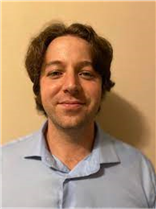
The volatile chemistries (<150 daltons) from legacy geological materials, core chips and cuttings, with known tar from the Kuparuk River and Prudhoe Bay fields from the North Slope of Alaska were analyzed with rock volatile stratigraphy (RVStrat). Core chips and drilling cuttings were analyzed from multiple wells with known tar zones in the Kuparuk River C and A sands and the Ivishak sandstone. Previous studies involving detailed lithology descriptions, petrography, saturates aromatics resins and asphaltenes MPLC analysis (SARA), and/or rock eval pyrolysis on these wells were used to identify the tar zones. These identified tar zones were correlated to enhanced small molecule signatures in the RVStrat data. The ability to map tar based on small molecule geochemical signatures has significant applications in laterals, especially coiled tubing drilled laterals, where other tools, or the collection of cores/side wall cores, that could traditionally be used are not possible. Such information can be crucial for planning EOR activities and evaluating the petroleum system.
Evaluating Faults, Fractures, Migration Pathways, Reservoirs, and Seals for CCS Risk Assessments in the San Juan Basin Using Rock Volatiles Stratigraphy of Cuttings and Cores from Legacy Oil Wells and a New CCS Monitoring Well
Smith, Michael P. (Advanced Hydrocarbon Stratigraphy, Tulsa, OK), William Ampomah (New Mexico Institute of Mining and Technology, Socorro, NM), Luke Martin (NMIMT), Timothy Smith (AHS), Patrick Gordan (AHS), and Christopher Smith (AHS)
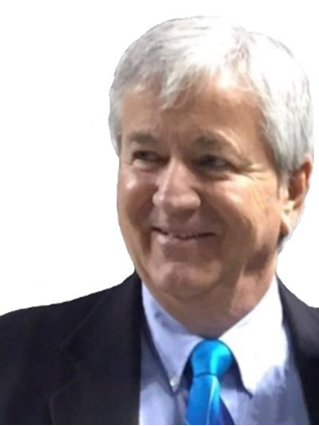
Extended abstract currently in review.
Alternating CO2–Phobic and CO2–Philic Strata Determined Using Rock Volatiles Stratigraphy: Evaluating CCS Reservoir and Seal Quality
Smith, Michael P., Christopher M. Smith, Patrick S. Gordon, and Timothy M. Smith (Advanced Hydrocarbon Stratigraphy, Inc., Tulsa, OK)

Rock surfaces of CCS reservoirs, and their seals, either attract, repel, or are neutral to CO2. In other words, CCS reservoir rocks and CCS reservoir-sealing rocks can be either CO2–philic, CO2–phobic, or CO2–neutral. CO2 phobicity is an underappreciated but important parameter in predicting the performance of a CCS reservoir and its seal. We present an example of well data from an inexpensive and rapid method for determining CCS reservoir phobicity, mostly from old or new drill cuttings.
The relative permeability of CO2 is greater for potential CCS reservoirs that are more CO2–phobic, as these reservoirs do not attract CO2 to the rock surfaces. However, the relative permeability of CO2 will be lesser for potential CCS reservoirs that are more CO2–philic, as these reservoirs do attract CO2 to the rock surfaces.
All else being equal, CCS reservoir seals will be more effective if they contain layers of CO2–philic strata, i.e., strata with rocks having surfaces that bond strongly with CO2. Smaller diameter pore throats are blocked to CO2 migration in CO2–philic rocks by CO2 blocking.
Rock Volatiles Stratigraphy is a rapid, inexpensive method of determining CO2 phobicity from the analyses of CO2 gently extracted at multiple pressures, frozen and concentrated onto liquid nitrogen traps, and analysed with other volatiles through sublimation and vapor transport into a mass spectrometer. The most common rock samples analysed are drill cuttings. Cuttings can be from old or new wells. The well can have been drilled with either a rock or PDC bit. The mud can be either OBM or WBM. Archived samples from old oil and gas wells provide inexpensive or free materials for determining CO2 phobicity.
The standard RVStrat analyses extracts CO2 and other volatiles from a single 400 microliters sample of cuttings or core at 2 pressures, 20 millibars and 2 millibars. Each extraction takes 7.5 minutes.
Figure 1 shows mole fraction of CO2 analysed at 20 millibars versus 2 millibars, for potential CCS reservoir in Texas state waters of the Gulf of Mexico. The gray shaded areas are shales and the yellow lines are maximum flooding surfaces.
Extreme CO2–phobicity occurs between 6250 and 7500 feet. In this depth range almost all the cuttings samples’ CO2 is extracted at 20 millibars and very little CO2 is extracted at 2 millibars. The lower Miocene sands in this depth range show no indication of CO2 bonding to the surfaces of the rocks’ grains. Almost all the CO2 from these samples is extracted at the higher pressure, 20 millibar, extraction.
Between 5450 and 6500 feet the 20 millibar and 2 millibar CO2 curves converge, and even cross over towards the core of this zone at multiple depths. This more CO2–philic zone composed of alternating layers of more and less CO2–philic strata is directly above the underlying zone of CO2–phobic sands.
The variable CO2–philicity of this zone may be the signature of a CCS seal of superior quality. The isolated layers of CO2–philic strata surrounded by more CO2–phobic strata suggest a permeability trap through which CO2 cannot pass.
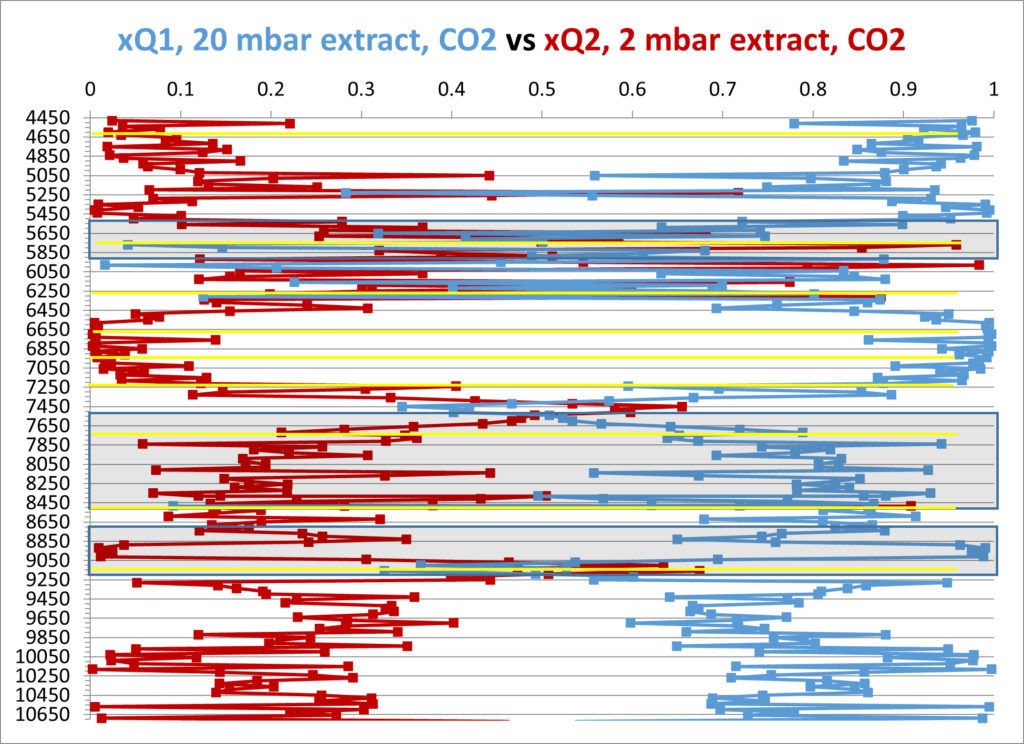
Figure 1. RVStrat cuttings volatiles, High Island 24 L Well No. 9: CO2 phobicity.
LAFAYETTE GEOLOGICAL SOCIETY (LGS) LUNCHEON PRESENTATION: Ushering in the Next Era of Texas Energy Independence
Stogner, Sarah E., Esq. (STOGNER LEGAL, PLLC, Monahans, TX)
BIOGRAPHY: For the past 13 years, Sarah Stogner has helped energy-related businesses understand, mitigate, allocate, and manage risk. She is now bringing that experience to help others learn from past experiences and avoid the same mistakes. Sarah is licensed to practice in Louisiana, Texas, and Colorado (pending in Mississippi). And yes, one of her favorite things to do is banter about indemnity provisions and new insurance provision wording. But the world is changing. And the legal industry is slow to adapt.
Sarah is actively working with other oil and gas industry leaders to develop smart contracts and utilize blockchain technology to avoid legal issues. We now have data that can prevent accidents. It was nearly impossible to know what happened downhole 60 years ago. That is rapidly changing and she is helping clients develop new ways of contracting and insuring risks by integrating data into legal decisions.
A link to Sarah’s firm page, campaign website, and social media is here: https://linktr.ee/unicornlawyer.
Geoelectrical Prospecting for Deep Fracture Aquifers in Kadna, Part of Minna Sheet 164 SW, North-Central Nigeria
Unuevho, C. I. (Department of Geology, Federal University of Technology, Minna, Nigeria), O. J. Ajiroba (Kwara State’s Ministry of Industry and Solid Minerals Development, Ilorin, Nigeria), A. N. Amadi (Department of Geology, FUT), K. A. Saloko (Department of Physics, FUT), K. M. Onuoha (Department of Geology, University of Nigeria, Nsukka, Nigeria), and E. E. Udensi (Department of Physics, FUT)
Kadna is an urban sprawl of Minna in north-central Nigeria. It is populated largely by middle class civil servants that obtain fresh water from six boreholes which produce from shallow fractures. The boreholes are now inadequate to satisfy the water requirements of the spiraling upward population. Opportunity for increasing the fresh water supply lies in exploiting fractures within depths greater than 60 m. The search for groundwater convergence areas within these deep fractures in Kadna was conducted using surface geological mapping and geoelectrical sounding. Rockwork was employed to plot Rosette diagram of measured joint direction. SAS 4000 ABEM terrameter was employed to conduct 1D geoelectrical sounding comprising electrical resistivity, spontaneous potential (SP), and induced polarization (IP) within traverses oriented along foliation strike. The resistivity sounding data was processed and analysed using WinResist inversion software, while the SP and IP were plotted and analyzed using Microsoft Excel. The modeled resistivity sounding curves revealed deep fractures of the HKH, HKHK, HKHKH, and KHKHKH curve types. They are confined fractures characterized by 60–313 ohm-m resistivity, SP values of -75 to +75 mv, basal elevation of 120–220 m (with respect to sea level) and IP values of 10–200 ms. Groundwater convergence area was inferred within the deep fractures in the easternmost part within longitude E6.596° to E6.610° and latitude N9.561° to N9.566°. This is the choicest area for water borehole drilling, being characterized by 100–200 313 ohm-m electrical resistivity, -30 to +50 mv, and basal elevation lower than 180 m and fracture zone thickness between 10 and 13.3 m. The second ranking choice area for drilling lies within longitude E6.5945° to E6.5965° and latitude N9.561° to N9.566°. The third ranking choice area for drilling lies within longitude E6.5945° to E6.5965° and latitude N9.561° to N9.566°.
Application of Geological and Geophysical Data to Characterize the E8000 Reservoir in the Afenmai Field of the Niger Delta Basin, Nigeria
Unuevho, C. I. (Department of Geology, Federal University of Technology, Minna, Nigeria), K. M. Onuoha (Department of Geology, University of Nigeria, Nsukka, Nigeria), A. N. Amadi (Department of Geology, FUT), S. O. Ejepu (Department of Geology, FUT), and E. E. Udensi (Department of Physics, FUT)
Afenmai Field is a partially assessed discovery within the central depobelt of the eastern Niger Delta Basin in Nigeria. It occupies 242 km2 surface area and presently has eight wells, giving it an average well density of one well per 31 km2. Improved assessment of the discovery is required to upgrade the field to development drilling status. As a contribution to improving the assessment, this study characterized the E8000 sand, which bears hydrocarbon in well 007. The data utilized comprised information on subsea vertical depth to top and base of sand and shale units, foraminifera content, geophysical logs, checkshot data, fluid contact depths, and 3D seismic volume. Sequence stratigraphic concepts were employed to analyze the sand and shale units, foraminifera content, and geophysical logs. The E8000 sand was mapped through the 3D seismic volume, and a depth-structure map was produced. The map reveals a major structure building synthetic fault in the middle of the field. The fault runs approximately east-west in the eastern part of the field and northwest-southeast in the western part. The sand is a lowstand systems tract with a roll-over anticlinal structure that forms a three-way closure with a crestal synthetic fault. The reservoir pay occupies about 4.5 km2 areal extent, with opportunities for drilling four development wells along the east-west axis of the closure. Opportunities exist for drilling a minimum of three development wells southwards of well 007. Approximately 4000–5000 root mean square amplitude values characterize hydrocarbons in the reservoir. A prospect is generated within the eastern part of the major structure building fault’s upthrown block.
KEYNOTE PRESENTATION: Class VI Permitting Process
Ussery, Ian, Brody Friesenhahn, and Sam Yun (U.S. Environmental Protection Agency, Region 6, Dallas, TX)



Abstract not available as of press time.
BIOGRAPHIES: Ian Ussery has been a geologist with the EPA Region 6 Underground Injection Control (UIC) section for the past two years. At the EPA, Ian handles numerous functions: Co-lead for Class VI permitting, permit review team member for Class VI and Class I permits, OCC state oversight, and UIC FOIA (Freedom of Information Act) coordinator. Before joining EPA, Ian spent 6 months with a geotechnical firm performing various geotechnical and environmental consulting activities right out of college. Ian obtained his master’s degree in geology at the University of Texas in Arlington while contributing as a teaching assistant for mineralogy. While also working part-time at the Shimadzu Institute for Research technologies, where he conducted his graduate research in petrogeochemistry. Ian also earned his undergraduate degree in geology at the University of Texas in Arlington, graduating summa cum laude and being an active member of the National Honor Society, Geological Society of America, and Geologic Honor Society, to which Ian was the recipient of the W. A. Tarr Award.
Brody Friesenhahn is a structural geologist with the Underground Injection Control section at EPA Region 6. Brody holds a Master’s degree from Southern Methodist University, where he researched mid-crustal syn-kinematic magma emplacement and ran the university’s X–ray Fluorescence Geochemistry lab. During his time at SMU, Brody worked as a teaching assistant for field methods, structural geology, igneous and metamorphic petrology, and mineralogy. Brody received a Bachelor of Science degree from the Jackson School of Geosciences at the University of Texas at Austin, where he conducted undergraduate research focusing on brittle deformation during the Laramide Orogeny. Prior to joining the UIC section in December 2020, Brody was an ORISE research fellow in the Wetlands section at EPA Region 6, where he focused on hydrogeologic modeling and wetland mapping. In addition to serving as one of the members of the UIC section’s Class VI leadership team, Brody is the section’s GIS lead, a Class VI permit and no migration petition reviewer, and serves as supporting staff in the region’s Groundwater Center.
Sam Yun is a geologist with EPA Region 6 Underground Injection Control (UIC) section. Sam is the state oversight manager for LDNR IMD and is a review team member for Class I petitions and Class VI permit applications. Before EPA, Sam worked as a surface data logger for Halliburton in offshore Gulf of Mexico and Permian Basin. Sam graduated with a Master’s degree in geology from the University of Louisiana at Lafayette, and a Bachelor’s degree in geology from the University of Georgia.
SIPES LAFAYETTE KEYNOTE PRESENTATION: Upstream Integration for Independents
Vassilellis, George (Insight-Pegasus, The Woodlands, TX) and Ewert Munoz (Austral Integrated Services, Inc., Conroe, TX)

Probably unknown to the rest of the world, most of the oil and gas production in USA originates from independent oil companies, most of them in the states of Texas, Oklahoma, and Louisiana. On the other end of the spectrum, there are less independents operating internationally and even less in Europe. One of the challenges that independents face is the staffing and mobilization needed to address technical challenges, regulatory hurdles, supply chain limitations and environmental transparency. Although 3rd parties, vendors, and consultancies can boost some operator’s resources, a robust operating model and experience is needed to manage their integration to deliver efficiency, reliability, and a dynamic decision-making process. This presentation goes through the basics of such an upstream integration, giving some insights on key technology approaches and how they can influence an operator’s bottom line, the team-building principles that ensure agility, continuous improvement and transparency between several stakeholders and finally going through an example of this approach in one of the most challenging projects overseas. In this example, a small team was able to uncover the potential of a giant onshore gas resource in Europe by executing a series of well interventions in old wellbores, enabling a new independent to succeed where several previous have failed, regardless the level of investment which they dedicated. The low cost and accelerated timeline are common benefits when an agile operating model like this is applied in other tech industries and has the potential empower and benefit independents as they must do more with less as technical and non-technical challenges are ‘trending’ against them.
Reservoir Characterization of the Utica Shale Play within Columbiana County, Ohio, Using Well Logs, Rock Mechanics, and Geochemical Data
West, Tyler, and Julie M. Bloxson (Stephen F. Austin State University, Nacogdoches, TX)
The Ordovician Utica Shale play is a rapidly developing play extending throughout the Appalachian Basin. The play is a mixed carbonate-siliciclastic system that grades from primarily carbonates at its base in the Lexington/Trenton limestones into primarily shale within the Utica Shale. As of January 2021, it is the third highest producing dry shale gas play in the contiguous US, although it is known to produce wet gas and oil in various parts of the basin. In addition to being an unconventional reservoir, the Utica Shale is a known source rock for much of the Paleozoic strata across the Appalachian Basin, including multiple lower Paleozoic sandstone and carbonate units in the region. Although some data are available on this play, models that scale from well site through basin are not publicly available. The objective of this research was the production of a model capable of reflecting the geology and geochemistry across Columbiana County, OH, as a part of a larger effort to create a scalable model that will encompass the entire Utica Shale play. This model aims to provide insight into the relationship between basin subsidence and eustatic sea level changes that produced conditions for organic material preservation and the deposition of this mixed carbonate-siliciclastic system, along with detailed information on reservoir characteristics.
Here we present a reservoir characterization model for the Utica Shale play within Columbiana County, Ohio, where data are relatively abundant, hydrocarbons transition from wet gas to oil production, and a total organic carbon (TOC) sweet spot exists. Well logs, rock mechanics data (permeability, porosity, Poisson’s ratio and Young’s modulus) and geochemical (mineralogy, TOC, and thermal maturity) data were utilized in the creation of a model in DecisionSpace software from Landmark. Seismic and core data within the area are sparse; therefore, the Schmoker and Hester method was utilized to estimate TOC from the readily available well logs, calibrated from the limited core data.
Within the county, lithology changes appear to correlate with known fault trends, with structural highs correlating with carbonate rich siliciclastics or thickened carbonate platform, and siliciclastic poor or thin shale intervals. Areas with increased clay contents are adjacent to these structural highs and also correlate with increased levels of TOC, creating subbasins, or “sweet spots,” that are localized, rather than extensive throughout the area. These appear to be depositional lows, potentially influenced by Proterozoic basement features and faults that would have been reactivated during the Taconian Orogeny. This model furthers what is known of the Utica Shale play in the study area by not only assisting with future hydrocarbon exploration and optimizing production, but reflects the relationship between lithology, eustatic sea level changes, prevalence of organic material, and basin subsidence in the area.
Onshore Texas and Louisiana Geopressured-Geothermal Resources for Baseload Electrical Power Generation
Wiener, Robert A. (Geothermal Resources LLC and Goh Exploration, Inc.)
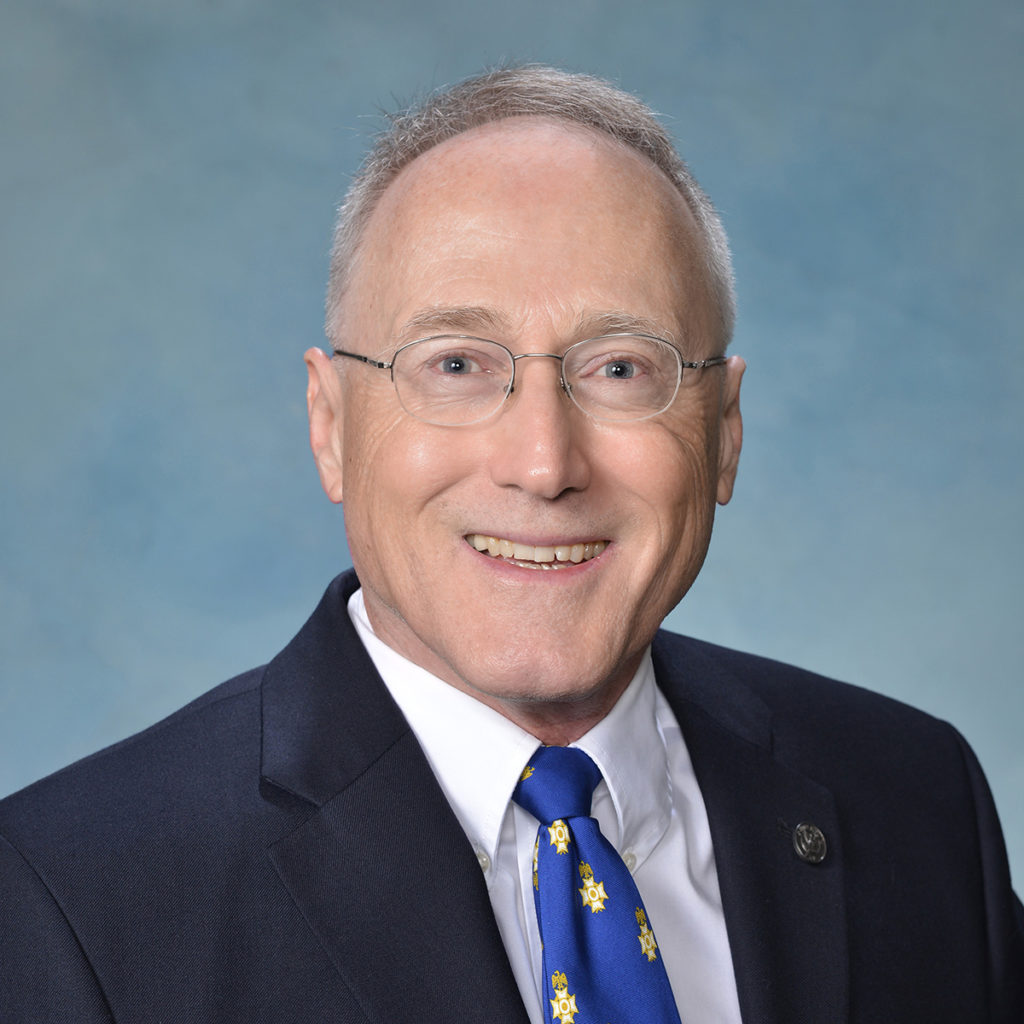
A tremendous energy resource sits within and below the hydrocarbon producing zones of the northern Gulf of Mexico. This resource is geopressured-geothermal brine that can be produced for heat and solution gas to generate electricity in hybrid power plants. In 1975, the United States Geological Survey (USGS) assessed the geopressured-geothermal potential of the onshore Texas and Louisiana Gulf Coast by breaking it into six trends from the Eocene Wilcox to the Miocene and younger sediments. The 1978, USGS assessment indicates this area has the potential to produce from 23,000 to 240,000 Mw of electricity for 30 yr. In 1976, the Department of Energy (DOE) began its Geopressured-Geothermal Program with its Wells of Opportunity study of 13 wells. A geopressured-geothermal pilot power plant with solution gas assistance was built to prove the viability of this energy source. Much of the basic research is done. Industry can now carry this energy play forward.
Because of global warming from greenhouse gas emissions, huge economic and societal disruptions are forecast. This has led to demands for carbon free energy. Geopressured-geothermal reservoirs have the potential to produce thousands of megawatts of carbon free base load electricity. (If I were an engineer, I would probably talk about wind turbines and solar panels, but these are not baseload.) As a geologist, I see conventional geothermal energy as a key part of the renewable energy transition. This is an economic and environmentally sound source of baseload electrical power. Geopressured-geothermal energy can be a significant factor in the transition away from fossil fuels. The development of electricity from geopressured-geothermal resources will provide geologists, geophysicists, reservoir engineers, and drillers with new opportunities. Basically, instead of drilling for isolated accumulations of oil and gas, a new energy business is forming that will drill for hot geopressured brine to convey heat to the surface for conversion into electricity.
Below are submissions that were not presented at SAGE 2022 and thus are not part of the official program.
Estimation of Reservoir Petrophysical Properties by Using Gas Well Testing Analysis
El Leil, Ibrahim M. Abou (Petroleum Engineering Department, Tobruk University, Tobruk, Libya) and Ali M. Elfeituri (Environment and Natural Resources Department, Academy for Higher Studies, Benghazi, Libya)
This study has been conducted to follow up the gas well testing techniques and analysis methods of these tests. The main objective of the well testing is to determine the viability of formation for the production of fluids and improved information about the well and the reservoir. Testing is mainly carried out to recognize changing the flow rate of the well and the pressure response as a function of time. The data that depend on analysis pressure data is called transient pressure tests.
This study is focused mainly on the two common well testing techniques such as buildup test and drawdown test as well as Horner plots are applied for data interpretation.
This study has been performed on three gas wells at Jalo 59 gas field are G–004 and G–010 for buildup tests and G–173 for drawdown test to investigate the petrophysical characterizations of reservoir rocks. The study revealed unacceptable results based on calculations of petrophysical properties such as the low permeability (k) values, the positive values of skin factor (s), pressure drop due to skin factor (∆Pskin), the low flow efficiency (FE), and effective wellbore radius (rwa). According to these results, the formation is required to be stimulated to enhance these parameters.
On the other hand, gas properties such as gas specific gravity (γg), pseudocritical properties (Ppc and Tpc), pseudoreduced properties (Ppr and Tpr) and gas compressibility factor (z) have been calculated as important parameters for estimation of reservoir properties and characterizations.
Applied Remote Sensing—Introducing SAR Polarimetry—and the Opportunity for Subsurface Assessments
Guy, Lauren, et al. (ASTERRA USA, San Diego, CA) (Speaker: John Metzger)

The advantages in the application of specific remote sensing technologies continues. Wide-area scalability and unaffected by weather issues L–Band Synthetic Aperture Radar (SAR) polarimetry offers exciting capabilities in subsurface soil moisture awareness and mapping. This out of this world technology was born on missions to Mars. Now an integral part of the Earth Monitoring portfolio of ASTERRA, see how and experience exciting results from the technique. Supported by patents and proven globally.
Translating PVT Data into a First-Principles Predetermination of Recovery Factor
Lapierre, Scott (Shale Specialists, LLC)

Optimal well spacing and stimulation intensity maximizes recoveries per well, per acre, and per capital dollar while minimizing negative offset well interactions. With climate concerns prioritized, an ideal development also minimizes the consumption of natural resources and the amount of atmospheric CO2 released from producing each barrel of oil. Abundant horizontal oil production from unconventional reservoirs reveals widespread premature transition to Boundary-Dominated Flow (BDF) relative to published estimates assuming late-life BDF transitions. The resulting overcapitalization has minimized economic returns and maximized the CO2 generated from superfluous diesel-fueled drilling & completion activity. The provided workflow closes the model-measure-optimize loop for sustainable development.
The combined works of Clarkson and Qanbari, Jones, Khoshghadam et al., and Lapierre suggest that transitions to BDF in unconventional oil reservoirs are initiated upon average reservoir pressure dropping below bubblepoint and imply that oil and pore-volume compressibilities provide primary pre-bubblepoint reservoir drive energy. Intuitively it should follow that pre-bubblepoint oil recovery factors (RF) may be predetermined from first principles using PVT data independent of oil-in-place (OIP) or production information.
RFs for 2 Permian multi-well pads with historical transitions to BDF manifest in production are derived & combined with low uncertainty OIP to determine Recoverable OIP (ROIP). Cumulative oil recovered at known BDF transition is compared to the novel derived ROIP.
The oil recoveries at bubblepoint predetermined by combining PVT–based recovery factors with low-uncertainty OIP agree with the observed cumulative oil barrels produced upon onset of actual BDF transition to within +/-10% when 100% stimulation efficiencies are assumed (with stimulation efficiency equal to [recovered oil] divided by [recoverable OIP]). Economic returns and CO2 release per oil barrel are estimated for the programs ‘as-is.’ The actual well spacing and stimulation intensities employed on the two disparate Permian development units are combined and used to recommend new well spacing and stimulation intensities to achieve the same 100% stimulation efficiency with maximized economic returns and minimized amounts of atmospheric CO2 released per recovered barrel.
Traditionally, recovery factors have only served as a reactive parameter used only to ‘sanity check’ claimed oil recoveries relative to claimed OIP. The derivation of recovery factor from PVT using first principles may provide the industry with a novel proactive tool to improve the economic and environmental performance of horizontal unconventional oil development. Furthermore, the novel definition of [Recovery Factor] as being equal to [Recovered Oil] divided by [Predetermined Recoverable oil-in-place] may serve to enhance the optimization of both well spacing and stimulation intensities.
Additionally, known recovery factors at known recovered oil volumes combined with low-uncertainty OIP provide a novel tool for predetermining how far to offset an existing, standalone legacy producer.
Thermodynamic and Kinetic Promoters/Inhibitors for Nucleation of Gas Clathrates: Halogenation in the Presence of Salts Combined with Carbon Dioxide Injection
Malone, Kason B., and Julie M. Bloxson (Stephen F. Austin State University, Nacogdoches, TX)

Utilization of carbon dioxide as a promoter in the methane hydrate extraction process combined with thermal stimulation and depressurization is an economical option for CCUS. At higher sea temperatures, hydrate stability decreases and methane leakage into the environment escalates. A proposed solution would be to use salts for production and then halogenate the methane to stabilize injected carbon dioxide as it renucleates. Chlorine radicals formed in ultraviolet light react with methane hydrates, dissociating the structure into an amorphous blob. The chlorinated hydrocarbon then acts as a promoter in hydrate formation, with end products being near equal mixtures of CO2 and guest gas in crystalline structures, plus natural gas extracted for processing.
The byproduct hydrochloric acid can potentially dissolve host rock in carbonate facies, with pH changes having little impact on nucleation rates. Salts are used as hydrophilic inhibitors due to their ionic interactions with hydrogen bonding. Inclusion of introduced guest gases modifies lattice stability, while catalysts reduce activation energy for amorphous intermediates through reorientation. Thermodynamic promoters increase stabilization and inhibitors cause dissociation. Bubble formation modifies interfacial surface area agglomeration, surface-active agents reduce capillary forces, and transport phenomena (diffusion) of the fluid influences kinetics of hydrate growth.
Multiple organic molecules were evaluated for stability and salts were compared for inhibition effects. Chlorofluorocarbons (CFCs), hydrofluorocarbons (HFCs) and other organohalides with covalent bonding were inputted into Gibbs free energy dependent phase diagrams at incremental molar concentrations. Results of simulations at 1 MPa intervals up to 20 MPa indicate that halogenated hydrocarbons act as a promoter for CH4 and CO2. Greater concentration of the halogenated hydrocarbon with simultaneous decreasing methane amount maximizes thermodynamic stability for CO2. Organohalides were found throughout various phases in experiments, and interactions with CO2 vapor determines hydrate kinetic rates. As the CO2 condensates into the liquid phase, compressibility decreases due to kinetic-molecular gas velocity shifts. This creates a sloped hydrate growth curve where the liquid-gas interface for CO2 has multiple amorphous structures forming at vaporization points, indicated by sharp curves of dissociation.
Throughout this interpretation of data, homogenous blob hypothesis was shown to fit statistical analysis. As a modification, arrangement of the bubbles formed in the gas vaporization indicates that decreasing interfacial free energy at azeotropic pressures allows maximum kinetic rates. The arrangement of the hydrate structure follows the dissociation curves for SI, SII, and SH structures. For the most effective CFCs, the promoting effects increase stability by over 10 K, showing higher temperature structures forming CO2 SI hydrates.
Highly concentrated alkali cations tend to inhibit the nucleation, but at lower concentrations the alkali ions inhibit for lower pressures only. This is attributed to the solubility curve corresponding to absorption of the guest gas. Hydrophilic salts at high concentrations can dissociate the structure, breaking the crystalline hydrogen bonds. Salts dissolved in the solute decrease volatility, facilitating dew point liquids, thus changing nucleation kinetics at low saturation.
Organohalides and other surfactants provide evidence that hydrate formation is dependent on hydrophobic nature, where a structure that has an electromagnetic charge will determine the probable arrangement of the hydrogen bonding. This allows materialization of guest gas interaction to include chemical arrangement of dipole moments in azeotropes or bubbling structures. Furthermore, blobs of local bubbles produced have the greatest chance of induction, with the vapor-liquid interface having favorable conditions for hydrate formation.
A halogenated system allows for stability shifts, while salts could be further used to engineer desolventizing flow rates for methane hydrates trapped within sediment. Insight into mechanisms of hydrates in the presence of ions is valuable for understanding potential reservoir storage and production. Estimated amount of sequestered CO2 proposed in extraction of methane could exceed 1000 Gigatons in producible, measurable, storable shallow reservoirs, beyond enough capacity for all current and future atmospheric carbon dioxide.
Pipeline Infrastructure Monitoring with L–Band SAR
Metzger, John, and Steve Borron (ASTERRA USA, San Diego, CA)

No abstract available.
Applied Geoscience through Time: How the 1761 Transit of Venus Led to Subsurface Contour Mapping with Energy and CCUS Applications
Willis, James J. (SAGE President; WSAG, St. Martinville, LA; Louisiana State University, Baton Rouge, LA)

This paper (in progress) explores the remarkable history of how the transit of Venus led to the development of structure contour maps and the discovery of oil and gas. Other aspects along the timeline will be discussed including measurement of the solar system, improved surveying techniques, and refinement of our understanding of gravity,
BACKUP PRESENTATION: Relative Strike (RSTRIKE) Curve Extraction from Azimuthal Log Data for Enhanced Petrophysical Refinement
Willis, James J. (WSAG, St. Martinville, LA; Louisiana State University, Baton Rouge, LA), and Lauren A. Martz (Rice University, Houston, Texas)

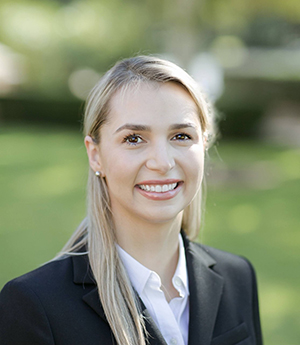
Relative dip (RDIP) is a critical and widely used parameter in structural characterization and geosteering using image log data and represents the maximum tilt of planar element (e.g., bed, fracture, fault) relative to a wellbore, with relative dip azimuth (RAZIM) being its azimuthal direction as measured clockwise from wellbore high side. Relative strike (RSTRIKE), much like normal strike and dip, is perpendicular to the RAZIM direction and represents the orientation at which the planar element appears horizontal relative to the borehole.
During LWD azimuthal log acquisition, data are acquired as the toolface rotates and are partitioned into sectors around the borehole. For example, a 16 sector dataset has 16 individual log curves, each representing a 22.5 degree section around the borehole. Most commonly, the sector log curves are then processed into the classic image log format, for dip and structural characterization, sedimentological/stratigraphic analysis, and so forth. RSTRIKE analysis, however, represents an additional class of azimuthal log analysis, specifically as a means to extract refined petrophysical data from the azimuthal sectored log curves themselves.
The typical log curve acquired during LWD operations is derived by the average measurement over a specific period of time (time-average period typically seconds) as the toolface rotates arounds the borehole. Relative to a given stratal unit, the majority of azimuthal measurements unfortunately exhibit a “cross-stratal” component, especially with thinner units and as RDIP increases (e.g., running “horizontal”). For example, consider in a typical geosteering configuration, when the toolface is high side, the measurement is essentially looking up into younger strata, and when low side, looking down into older strata. The time-average curve resolution is thus degraded, often severely, because of these cross-stratal aspects. However, the individual log sectors that are oriented closest to the RSTRIKE direction (marked as the inflection points of cosinusoid forms on an image log) have a distinct advantage that their measuring direction (or “look orientation”) is most parallel to the strata. RSTRIKE sector logs exhibit reduced cross-stratal measurement and therefore RSTRIKE logs exhibit significantly better stratal resolution (and thus log resolution) versus the typical LWD log curves.


